Sports
15 Things You Didn’t Know About the Board Game Ludo
Ludo is a simple board game in which players advance counters by throwing dice. It has an Indian origin from the game Pachisi but patented in Britain as the game Ludo.
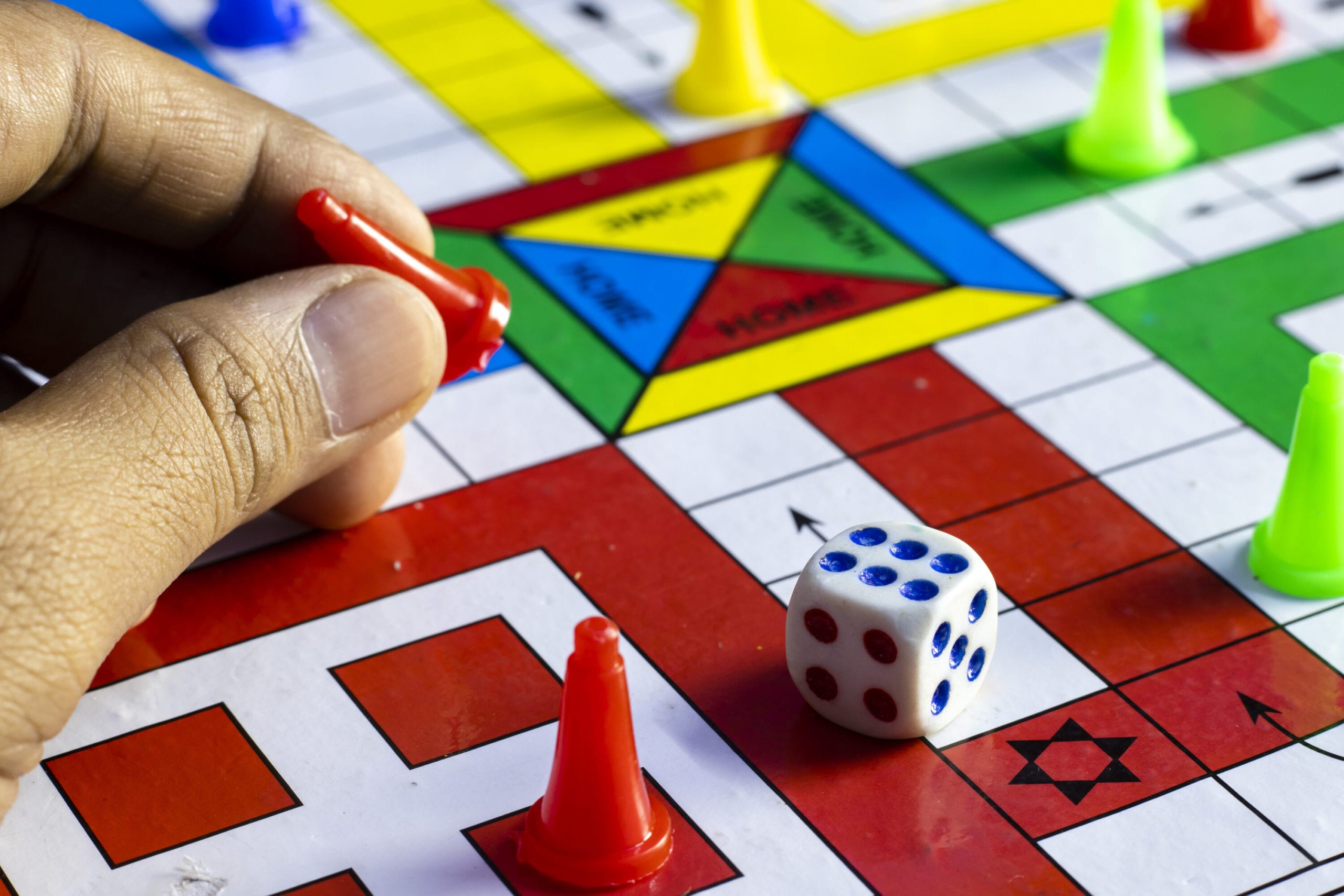

These words seem to be accurate, as the advent of phones has replaced many human interpersonal activities, seeing that the popular board game can now be played on the phone with or without friends. Though this can be said to be one of the downsides of phones’ emergence, technology lovers have debated that it has even brought the game closer to man. The resounding claim is that mobile games enable you to play anywhere—from the comfort of home or during lunch break at work. While on the flip side, it would look quite awkward to be seen carrying a physical board game around.
“We lost a page of our childhood when Ludo and Chess appeared as phone games.” — Lippy.
Those who are lovers of board games are always in for a thrill. They are still a fun way to bring people together to have some fun. I grew up playing many board games—Monopoly, Snakes and Ladders, Wheel of Fortune, Scrabble, Chess, Ludo, to mention but a few. As an adult, I still enjoy playing board games. When we have friends over, you need to see the thrill amongst my friends when you tell them that we have the board game Ludo in the house. There is an electric thrill that flows into the room as the game is played. So, in this piece, we would be sharing fifteen things you never knew about the board game Ludo! I trust you would enjoy the thrill of the discoveries you are about to make. Let’s go!
#1. Aim & History of the Game
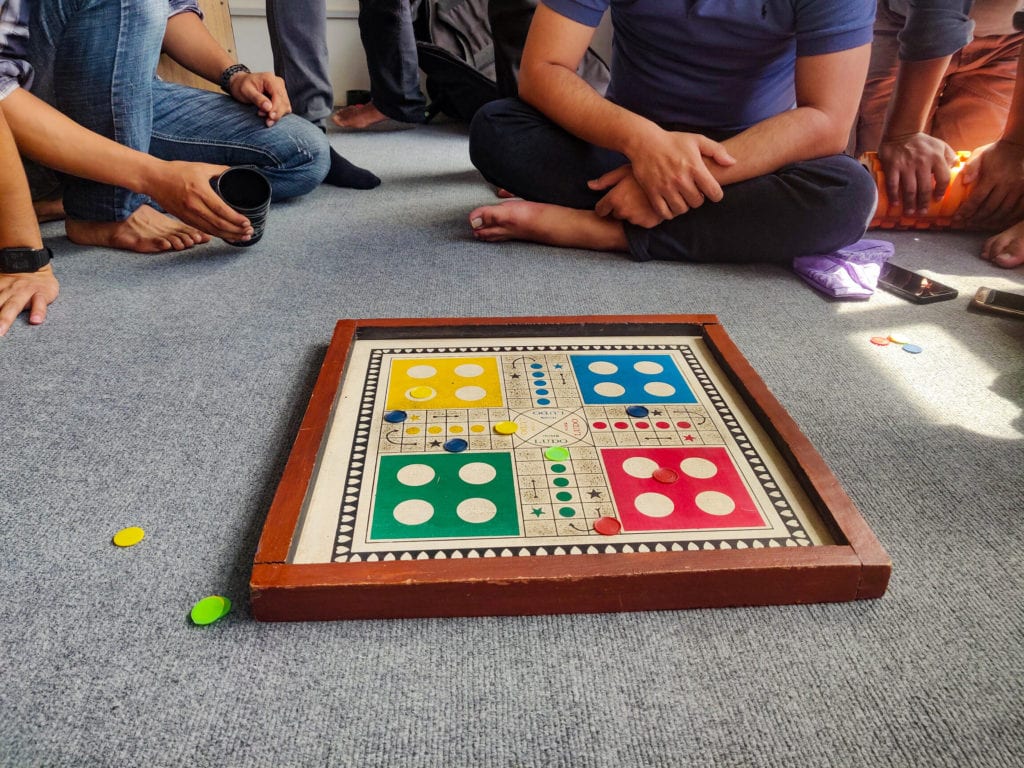

Ludo is a strategy board game involving two or more players competing for superiority. The maximum number of players is usually four. It requires calculation as competitors are expected to be tactical in pushing their tokens. It’s important to note that the players take turns to roll a single dice to put their tokens in a dead heat race to see who would be the first to finish and become the game’s winner.


This board game was derived from the ancient Indian game, Pachisi or Twenty-Five,1 formed from an old game of Chaupar, or Chausar played in the Kurukshetra wartime, which is about 10 century BCE. The game Ludo was discovered in India in the 6th Century, with the earliest proof of the game’s evolution clearly written in the Caves of Ellora. It would interest you to know that Pachisi was remodeled to be played with a cubic die with a dice cup and has received a patent as Ludo in England in 1896. However, the Mughal emperors played the latest Ludo version, with Akbar the Great being a notable example.
#2. Names of the Game
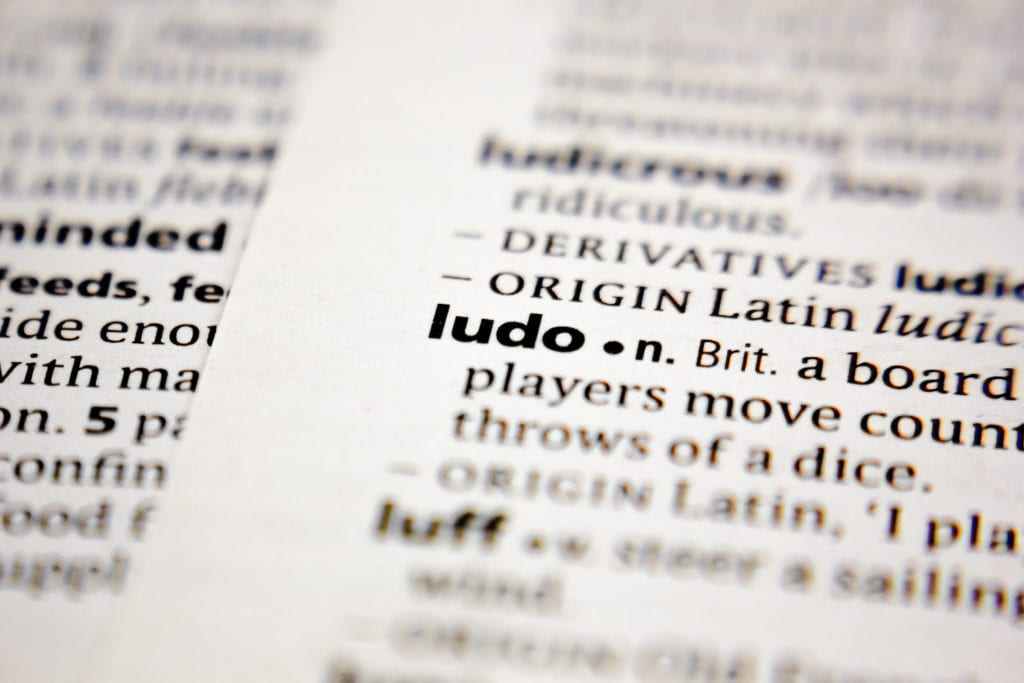

This board game Ludo goes by different names in different places. In Poland, the board game was given the name “Chińczyk,” which means The Chinese. You are beginning to ask why, right? Estonians prefer to call the game “Reis ümber maailma,” representing Trip around the world—which the game is really about going around the board to try and get home before the other players. Interestingly, China, Malaysia, and Singapore have a unified name for the game, “飞行棋,” meaning Aeroplane chess.


The Swedish are known to call the board game Fia, which is the accurate representation of ‘so be it.’ It would help if you also learned that there are two Swedish name variations: ‘Fia-spel’ and ‘Fia med knuff,’ which means ‘Fia the game’ and ‘Fia with push’ apiece. However, in Demark and Norway, the board game is known by its popular name, Ludo. Of course, whoever finishes the tour first wins and gets the last laugh. Maybe this was the same thought of the Hungarians for naming the game “Ki nevet a végén,” which means who laughs at the end.
#3. Behavior of Players


Just as we have variations in the game’s name, we also have different reactions. While some may lose and feel refreshed at the end of a board round, some always want to win. It is quite memorable that the Ludo name, “Man don’t get upset,” connects several players from various parts of the globe such as Bulgaria, Croatia, Rome, Serbia, Turkey, Germany, and others in their multiple languages. In German, it’s called ‘Mensch-ärgere-Dich-nicht;’ ‘Mens-erger-je-niet’ in the Netherlands, ‘Ne t’en fais pas’ in France, ‘Fa med knuff’ in Sweden, etc. So, you lose and have it in good fate, as man doesn’t get upset. Do you play the game at all? How do your friends react when you play? Tell us some of your Ludo reaction stories in the comment below.
#4. Ludo Board
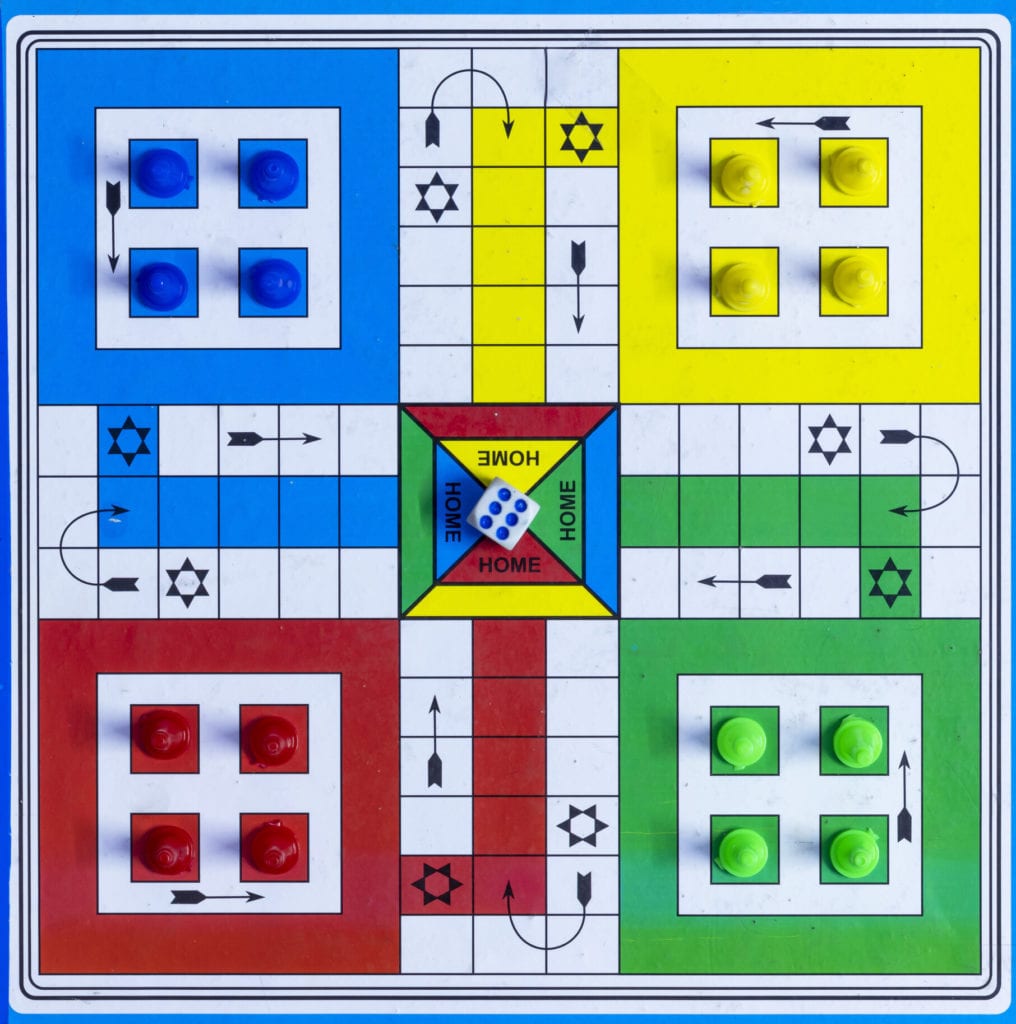

You may not be aware, but the game’s board also varies from place to place, with different indentations on the board. For the Indians, the board features a safe spot, which is usually the fourth square from the top in the rightmost column. However, the case is different for Denmark and some other countries, as their own boards have 8 spaces with a globe, with a star in the 8th space. It’s important to mention that the boards’ differences don’t hamper the game’s aim—to get all your tokens home before your opponents do.
#5. Game Play
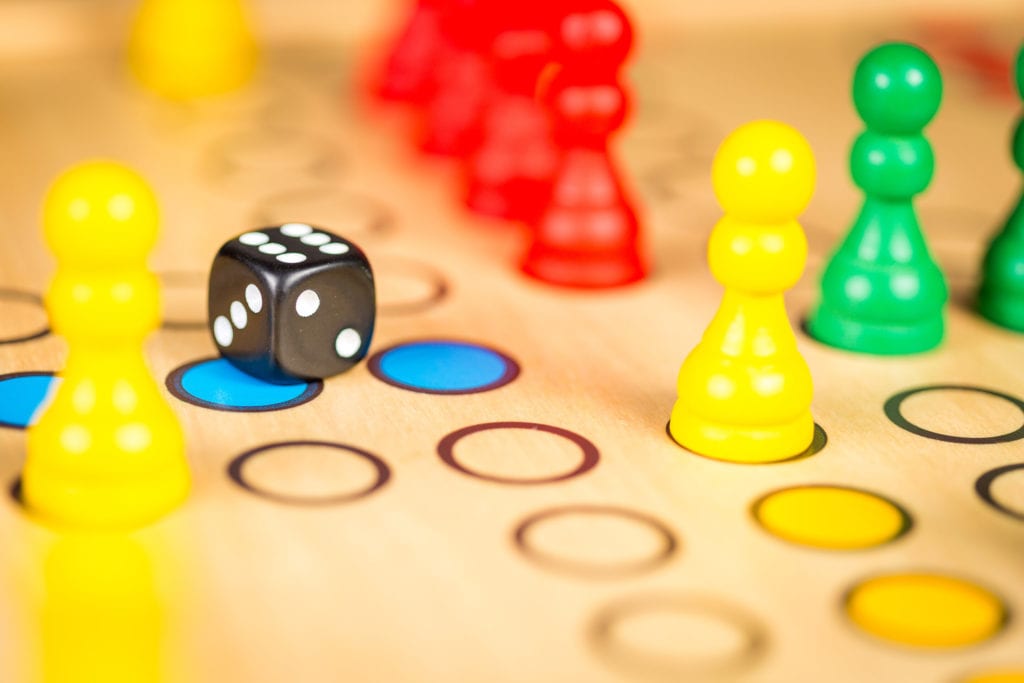

Did you know you could decide not to play after throwing a six twice? When a six is rolled, the implication is that the token, or as it may be called elsewhere, is advanced for one already in motion. If this doesn’t happen, then a new token is brought in. You sure know that rolling six means you get to roll another as a bonus for rolling six, and if the player rolls six again, another rolling is guaranteed. If the third roll is also a six, the player may choose not to move and pass to the next person.
#6. Basic Variations


Here we would be considering how the game works in two different settings. For instance, in Denmark, the board has eight spaces marked with globes, except for the last one, which is starred. By implication, the globes are secure places where a player’s token cannot be captured. In Vietnam, the game mimics a horse race modeled pattern with the tokens modeled as horse heads. One on the dice is given an equal station to a six, which means a player can start a game by rolling one. Whatever the variation, the end goal is to have fun.
#7. African Variations
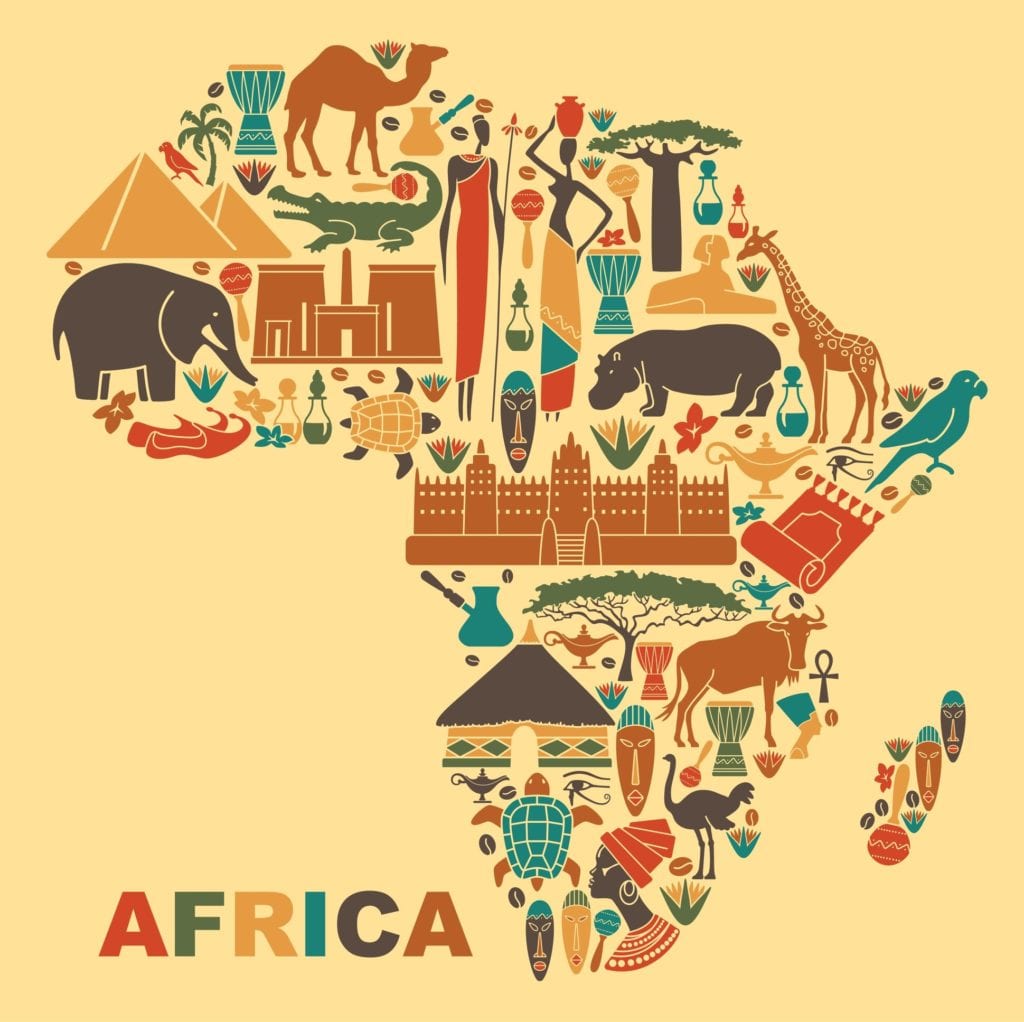

There are different approaches to playing the board game in Africa, and they include that a doubled block also disturbs the trailing pieces of the player who initiates the block. Also, if the players sitting opposite are a team, they are free to exchange numbers. A bonus is also enjoyed if a player captures the piece of another player. Interesting how this game has different ways of achieving its aim!
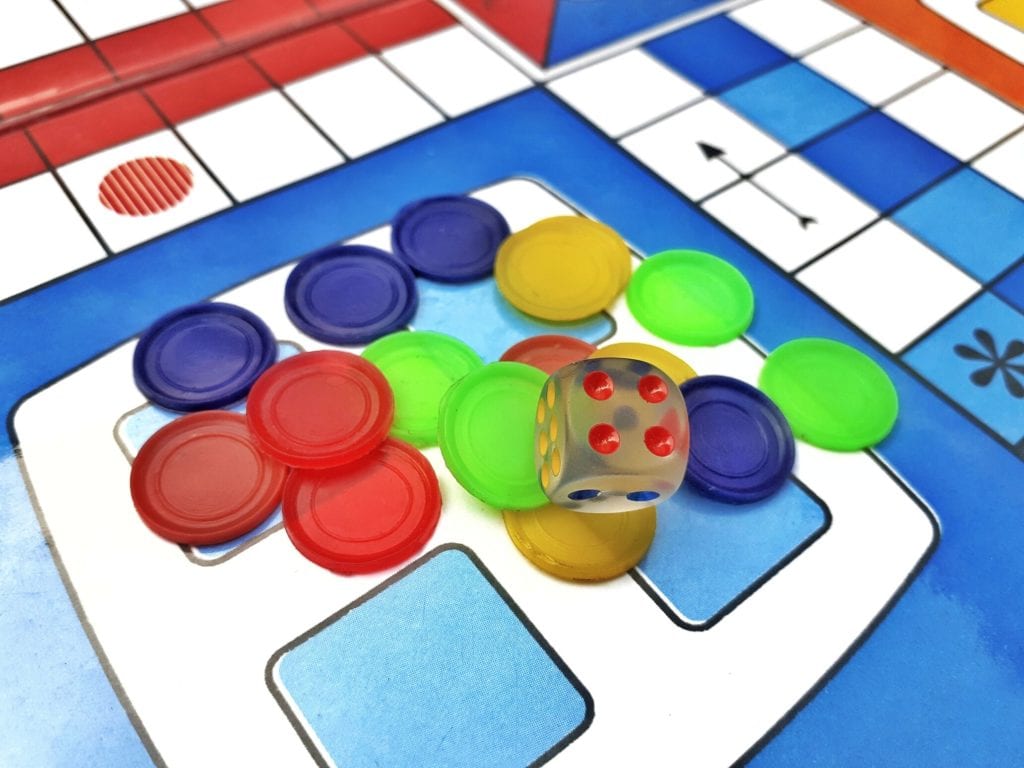

Ludo has a way of infusing fun electricity among Africans. During the 2017 Thanksgiving Day, I hosted a group of my friends at my house. People were having fun, eating, chit-chatting, and having fun. We brought out the Ludo game, and the whole atmosphere changed! It was like a jolt of electric charge passed through the room. The room came alive as the players engaged in the game with a frenzy of excitement. That is the Ludo effect amongst Africans! The atmosphere was charged with so much fun and excitement!
#8. Cheating
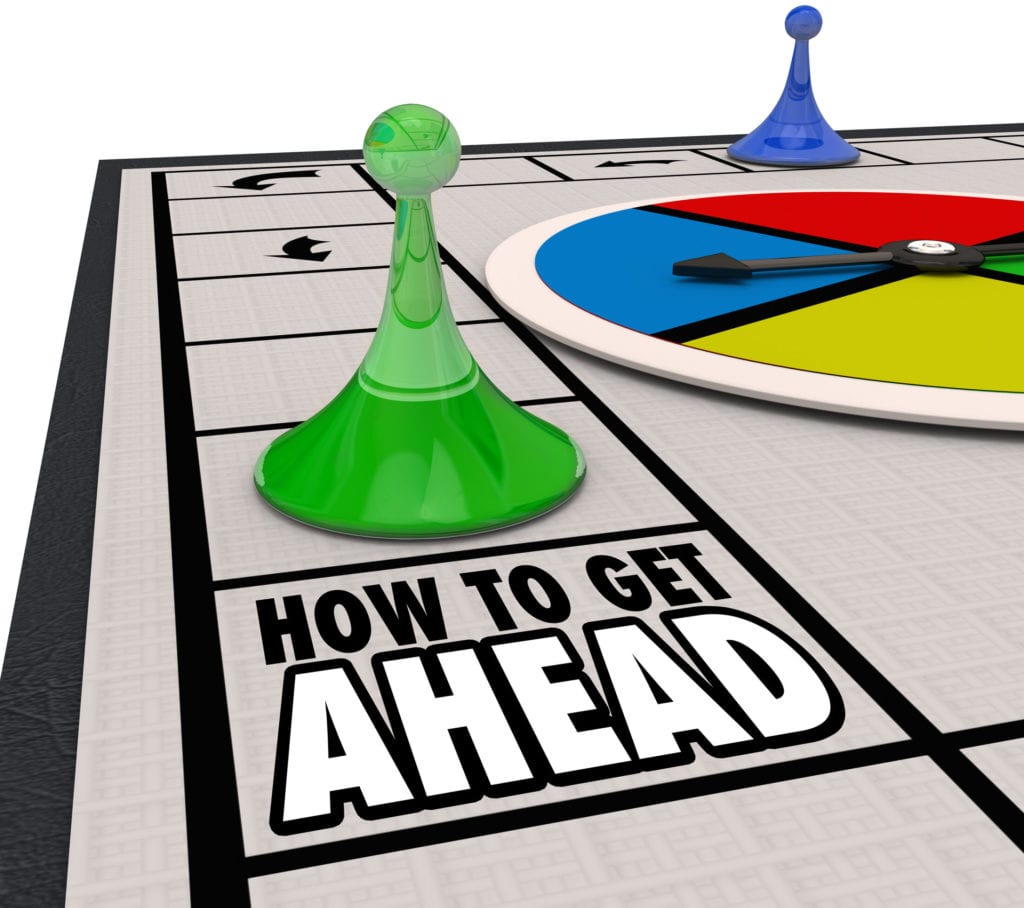

This element can’t be detached from the game, as it is easy to cheat on the board game, especially when your game partner isn’t alert. Cheating most times start with a screech. By now, a rhetorical sage would be asking, “What does a screech mean? Screeching is an exciting and calculative way of confusing the game. It allows you to provide for the next few tips to execute to garner a win. It’s almost like creating a smokescreen when the other player is not paying attention as an avenue to plot a lethal strategic move against the other player. The screech, not particularly honest, gets the player ahead via a smokescreen approach.
#9. Cheating II
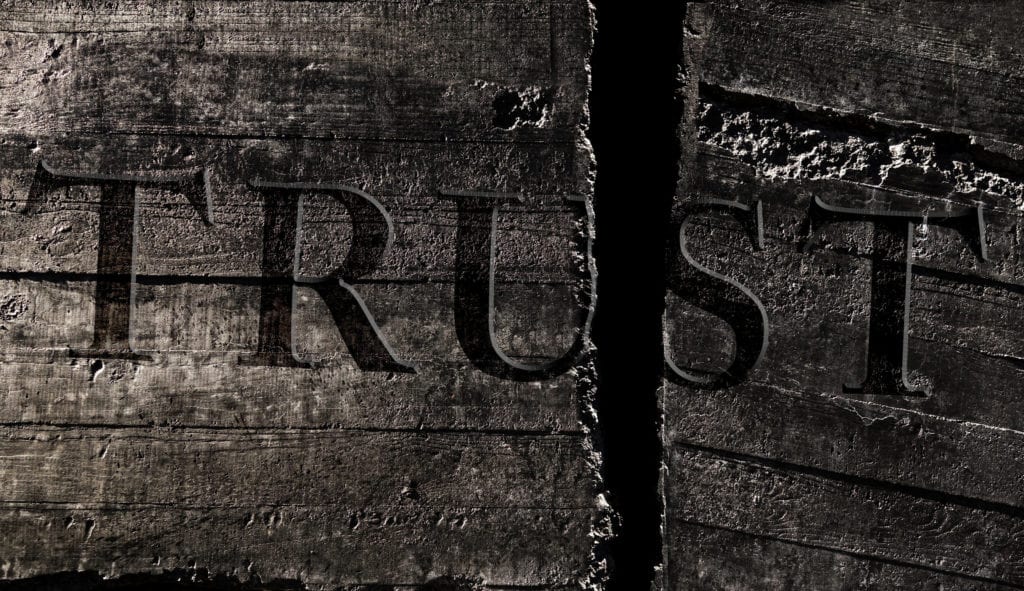

While cheating on the board can be seen to be relaxing and funny, it’s capable of ruining trust. This may sound unreal, but it is what it is. Being a dishonest person, even in a simple game of Ludo, can topple your friendship for life to be honest. After you must have screeched, then you are in the perfect situation to move your opponent’s pieces back and move yours forward. All done, you have the game in control. Screeches have their way of distracting players. Be careful. If the screeching happens to be high pitched, capable of causing boards to shatter, move a piece of the board while everyone is distracted. Screeching is not the best thing to do, be careful, though.
#10. It’ Didn’t Happen


The Ludo game is so competitive that players will do everything to get by. ‘It didn’t happen’ is also another cheat element usually experienced in the board game. You often find players arguing that there was no hit. In a bid not to lose, a player may protest that his token was not in the right position (when it was hit), which might entangle the game.
#11. The Newbie Scope


This is another useful and smart way of saving your behind. Sometimes, you have a newbie around, and you exploit the opportunity to the fullest by making sure he doesn’t run after your tokens and seeing that he follows those of others. Then you can be sure every move is safe. By doing this, you have your friends close and your enemy closer, which is enough to win the game. It’s all, ‘Strategy! Strategy! Strategy!’
#12. Revenge


Revenge works on the board of those who are kings of the game. Regardless of your status, whether a veteran or a professional, your pieces would still be knocked in. But there are always options, it’s either you mourn the hit and lose out or come back with a very tight revenge plan, which is necessary for becoming a seasoned Ludo player. Your piece gets hit; then you rally all others to get the work done. Period!
#13. Flip It Off


This is yet another scheme deployed by some players at ensuring the ultimate thing doesn’t happen when the board game isn’t going in their favor. The losing party, vindictive at best, performs a dastardly act by flipping it. Players on the verge of losing a board game round might decide to throw the towel in, which is achieved by flipping the board. The action condemns the game to a dead or inconclusive end.
#14. How to Get Six


You want to boss the game, then you should be ready to roll out a lot of sixes on the dice, and that you would learn how to do so with relative ease. Dice rolling is all about Probability. To get a six when rolling a single six-sided die, you will have a 16.7 percent chance of rolling the number (i.e., the Probability calculated by the number of outcomes divided by the number of possible outcomes. Which equals 1 ÷ 6 = 0.167). Should you use two dice, you will have a 2.78 percent chance (i.e., calculated with the formula, Probability of both dice = Probability of outcome one × Probability of outcome two = 1/6 × 1/6 = 1/36 = 1 ÷ 36 = 0.0278).
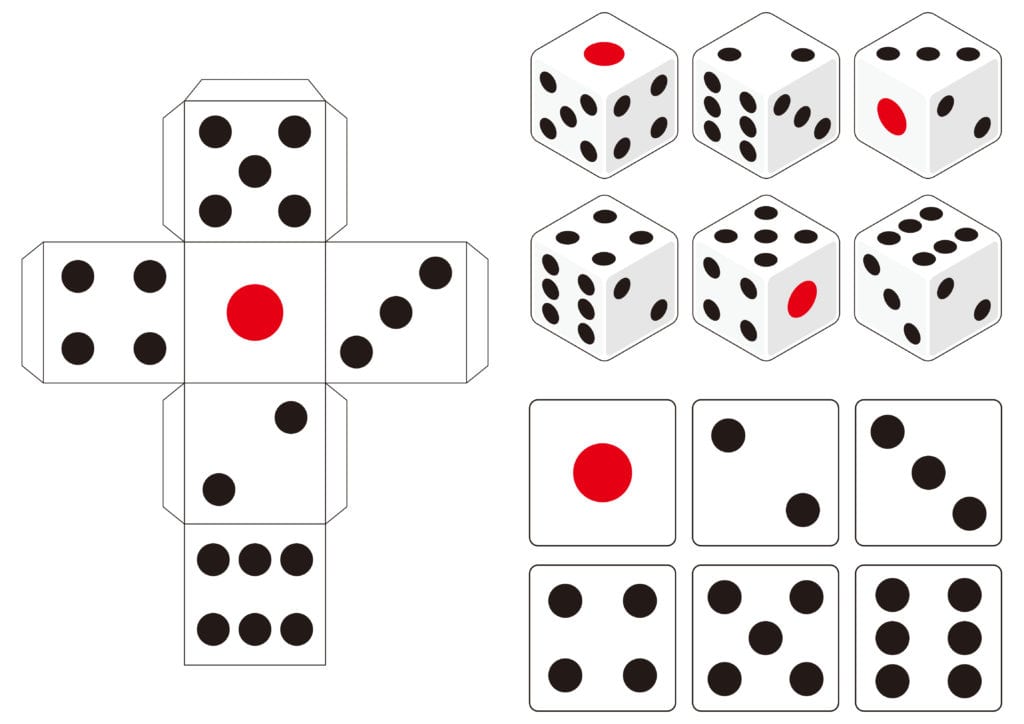

Reading “The Best Techniques to Roll the Dice Perfectly” by Mintdice, there are three best techniques to roll a specific number on the six-sided dice continually. The best methods are the loaded dice, the microwaved dice, and the controlled throw. First, the loaded dice won’t work in the Ludo game—everyone will be rolling sixes. Secondly, who is going to allow you to walk away to go and microwave the Die? No one will let you do that, especially in the middle of a competitive game. Thirdly, the controlled throw will be the only way in a Ludo game. According to Mintdice, “to roll the numbers 1 or 6, you will need to place your index finger and thumb on the numbers that are exactly on the opposite sides and throw patiently.”
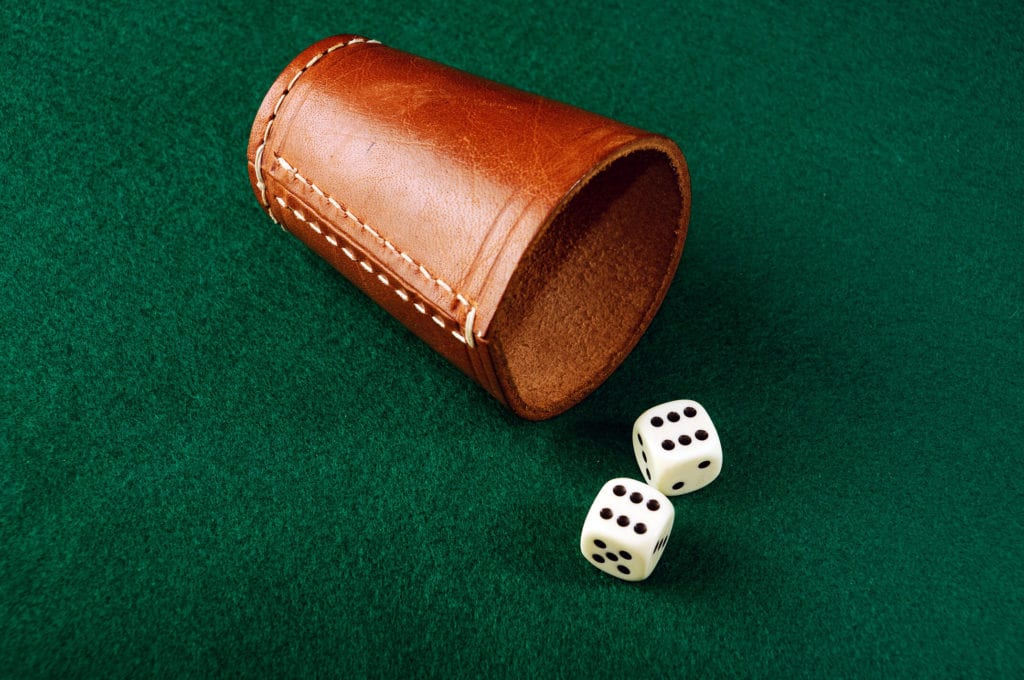

In the Ludo game, to use the controlled throw becomes dicey when you are allowed to throw the Die only using the Ludo cup. Except you have mastered using the Ludo cup to control your die or dice throw, then you are up for an uphill challenge at best. The dice cup levels the playing field in curbing the controlled throw. However, I believe that some have mastered the controlled throw art—even with the dice cup. For such people, the magic happens as they often hold and win the game. What a hack!
#15. Concentration


It might sound funny, but in reality, the board game trains players on concentration. Ludo is definitely one game that requires all parties involved to give their maximum attention, which is the primary way of guiding against some of the cheat elements or strategies highlighted above. While concentration is essential in the board game, it gives insight into what next to do or what risk to take, which is one of our lives’ realities, taking risks.


The article has been pretty descriptive. We have taken a journey from the inception of the game to the present day. We have looked at what the game is all about and the various strategies for playing the game. Apart from being a fun and family and friends-engaging-board game, Ludo has gone digital. Looking through the App Store of your phone will reveal various Ludo games from different companies (e.g., Ludo Star, Ludo Club, Ludo King, Yalla Ludo, etc.).
From all we have seen, we can stipulate that the Ludo game is pretty exciting. You thought you knew it all. So tell me, how many of the fifteen points covered above did you know about the game Ludo before reading this piece? Are you an avid Ludo player? If yes, tell us some of your strategies and fun memories playing the game? Let’s have a dialogue in the comments.
Reference
- Bell, R. C. (1979). Board and table games from many civilizations. (Revised ed.). London, United Kingdom: Dover Publications, Inc.
Sports
10 Things & More You Didn’t Know About Taekwondo
The name Taekwondo or 태권도/跆拳道 stems from the Korean words Tae (meaning “foot”), Kwon (meaning “fist”), and Do (meaning “way of”). Hence, the term Taekwondo means “the way of foot and fist.”


Growing up, I saw the movie “Enter the Dragon,” which featured the late Lee Jun-fan, commonly known as Bruce Lee. Watching him got me stoked on martial arts. He was the patron of Jeet Kune Do and a Chinese Martial Arts practitioner, Boxing, and Wing Chun. From there, I started watching Jackie Chan along with Sammo Hung. Jackie Chan, I know, is a Chinese Martial Arts practitioner, Jeet Kune Do, Judo, Hapkido, and what do you know—Taekwondo.
When did my interest in Taekwondo pick up? Abia State University in Uturu, Abia State, in Nigeria. As way back as 1997, I remember walking past students in the open Dojo learning the art of Taekwondo. Some of my friends then were practitioners from the years 1997 to 2000. People like Emeka Ekeugo—currently a Barrister and Solicitor at Transcendent Chambers. Onochie Agwunna—now a Facilities Manager at Diamond Bank, PLC. Uzoma Aliche—Founder and CEO at Uzoma Aliche Building Workshop (UABW). The genesis of my keen interest in Taekwondo began here—watching my friends perfect their art.
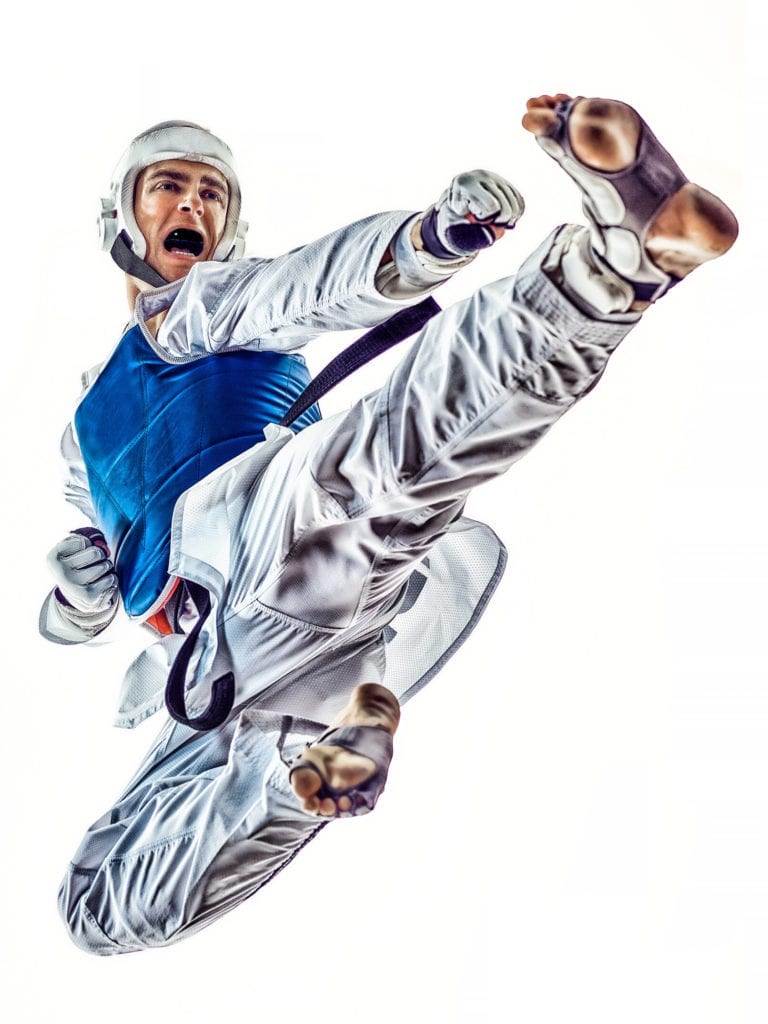

The name Taekwondo or 태권도/跆拳道 stems from the Korean words Tae (meaning “foot”), Kwon (meaning “fist”), and Do (meaning “way of”). Hence, the term Taekwondo means “the way of foot and fist.” Taekwondo is a Korean martial art set apart by focusing on various kicking techniques such as kicks at head-height, spinning and jumping kicks, and different fast-kicking styles. The kicks’ alternative is also multiple kinds of Taekwondo hand attacks that practitioners deploy at close quarters with their opponents.
New martial arts schools daubed kwans started sprouting in Seoul, South Korea, shortly after World War II ended in 1945. Korean martial artists with multi-faceted martial arts backgrounds (e.g., Japanese, Chinese, and Korean martial arts) established these schools. Between the 1940s and 1950s, albeit not known then as Taekwondo, was the martial arts taught and practiced at the kwans. The South Korean army embraced Taekwondo as the martial arts of choice. As a result, this helped to increase its popularity among civil martial arts schools.
History and Origin


The history of ancient Korea has a strong influence on the roots and origins of Taekwondo. Between 57BC and 668AD, three rival kingdoms of Goguryeo, Silla, and Baekje instructed their men to blend survival combat style martial arts. A style known as subak was most popular. As Goju-ryu and Shokotan karate are substyles of Japanese karate, so is taekkyeon known as the best substyles of subak.2
Silla had the lowest competitive advantage of the three kingdoms when it came to strength and size. To gain an edge over the other realms, they established an elite warrior force called Hwarang. These elite warriors were given comprehensive education, lived by a code of honor, and were taught subak, particularly taekkyeon. The Goguryeo kingdom focused on the legs and kicking in their practice of taekkyeon, which has morphed into one of the guiding focuses of Taekwondo today. The Silla kingdom morphed the art by adding hand techniques to their way of taekkyeon. Hence, part of the eclectic blend of today’s Taekwondo.2
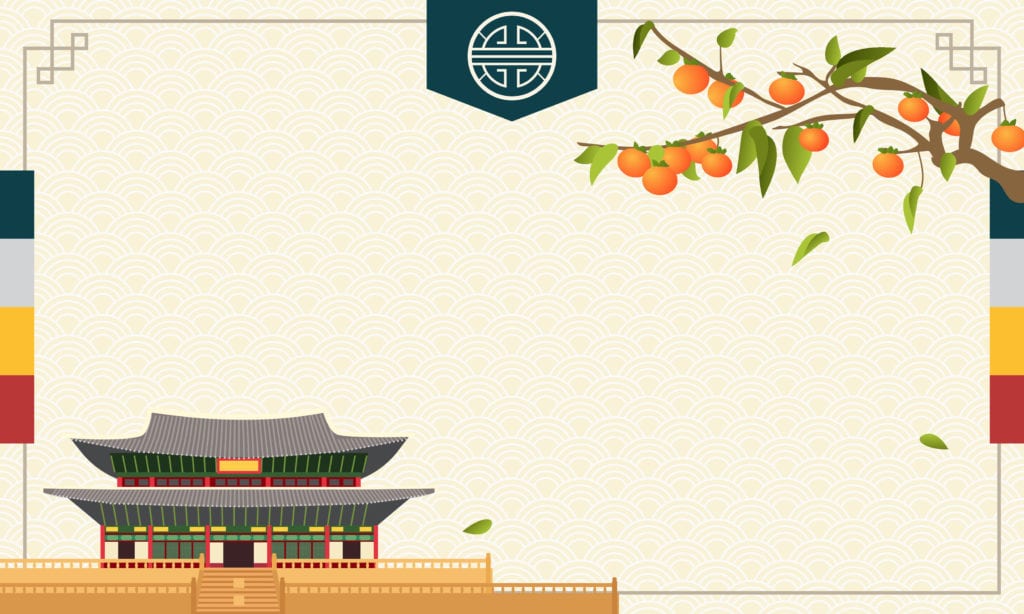

The Joseon Dynasty (1392-1910) saw a decline in interest in Korean martial arts. Confucianism was on the rise, and the national focus was on all things scholastic. The shift from Buddhism, the prevalent religion of the time, to Confucianism brought a wave of Chinese influence on the climate of the times, impacting the government and the people at large. However, because of the use of taekkyeon in the military, this subak style was fortunate to survive that epoch.4
During the Japanese invasion of Korea in the first half of the 20th century, the occupying force outlawed martial arts practice among the Korean natives. Taekkyeon did survive these challenging times by a spate of luck; howbeit, in an underground fashion to evade detection. Despite their martial arts being outlawed, the Koreans were exposed to the Japanese martial arts—karate and Chinese martial arts. After World War II (WWII), martial art schools started opening in Korea after the occupying force left.
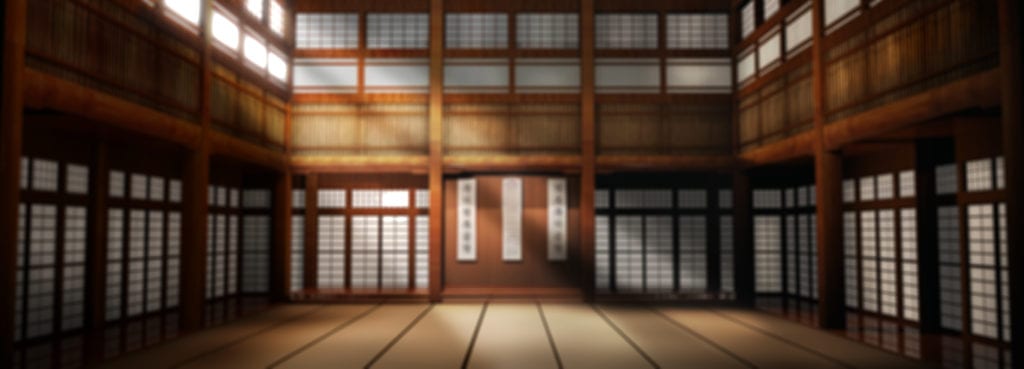

General Choi Hong Hi (November 9, 1918 – June 15, 2002), once a South Korean Army General and martial arts practitioner, is regarded as the “Founder of Taekwondo.” Choi Hong Hi also served as the President of the International Taekwondo Federation (ITF) organizations for many years. In his heydays, Choi learned Tae Kyon (i.e., the antiquated Korean art of foot fighting) under his calligraphy and Chinese character tutor, Master Han II Dong, a master of this martial art technique.
Choi also learned Shokotan Karate under Funakoshi Gichin, its founder and primarily known as a “father of modern karate.” In 1939, Choi rose to 1st dan (段: waypoint, level, degree) in karate, and 2nd dan came soon after. During this time in the Korean military, Choi decided to delve into various martial arts, particularly Taekkyeon, kung fu, and karate. He eclectically borrowed from these three martial arts to forge what is now practiced as Taekwondo today. Hence, we can say that Taekwondo is a hybrid martial arts regime comprised of techniques from Taekkyeon, kung fu, and karate.
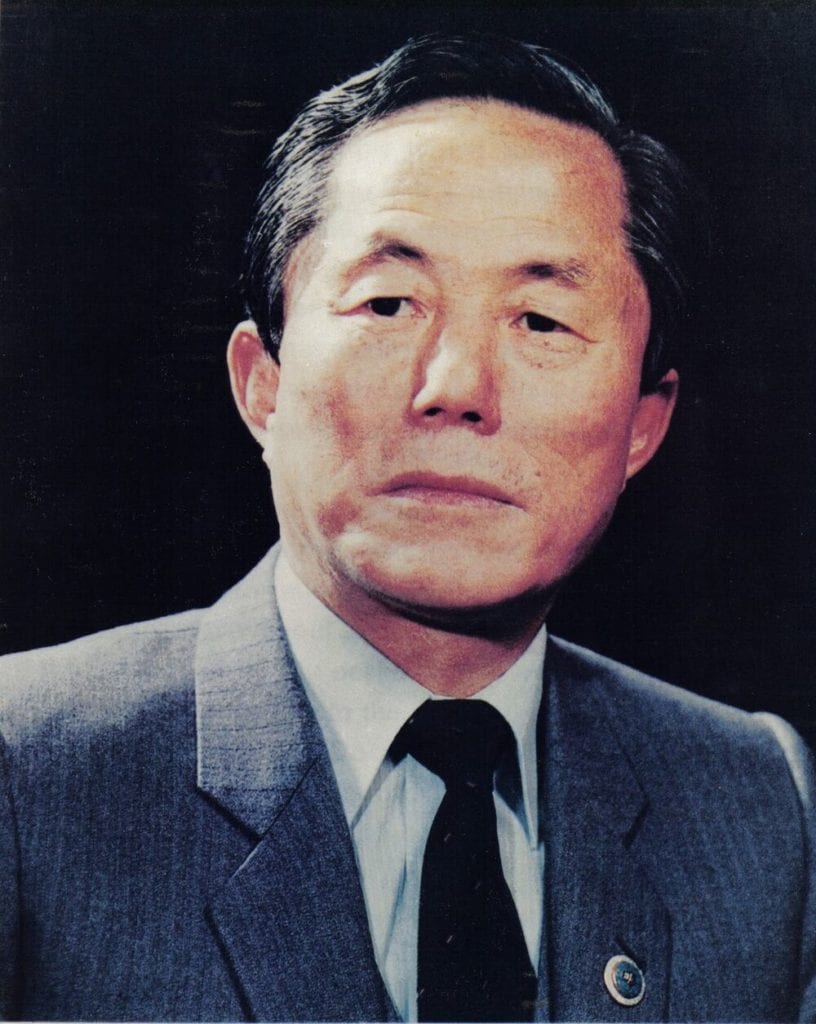

After his time in the military, he spent his time growing the craft of this martial art globally. As a result of his unflinching effort, the People’s Republic of China and Vietnam adopted Taekwondo as a core part of their military training in 1955. Taekwondo has become an integral part of several foreign armies’ training, and it’s even taught at the West Point in the United States. On April 11, 1955, South Korean President Syngman Rhee declared that all Kwan or Karate schools must fall under one system and name, thus Tae Kwon Do. After a long battle with cancer, Choi died on June 15, 2002, in Pyongyang, North Korea.
Taekwondo Evolution
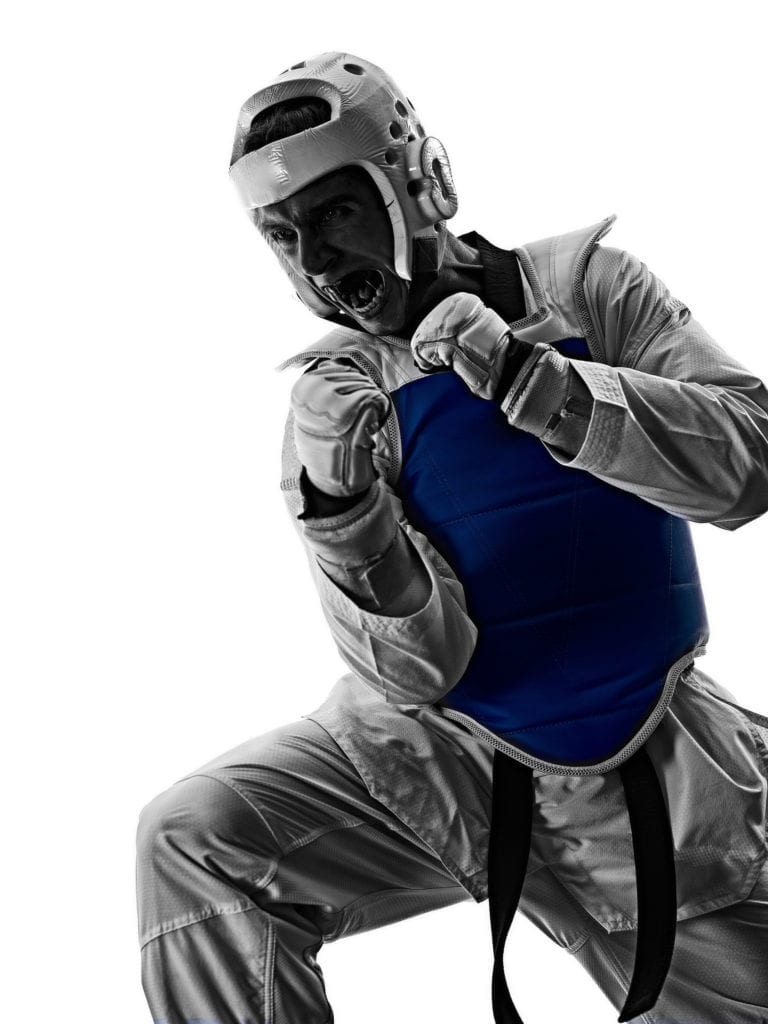

The evolution of Taekwondo has been an organic process. We have taken the liberty to see the Taekwondo martial art development in ancient Korea as practiced by the rival kingdoms of Goguryeo, Silla, and Baekje. Silla perfected the art of subak, gaining an edge over Baekje and Goguryeo—conquering Baekje in 600AD and Goguryeo in 668AD. The age of Confucianism during the Yi or Joseon Dynasty downplays martial arts. Further down the road, during the Japanese occupation era, the practice of Taekkyeon—the precursor to Taekwondo—continues to evolve.
The metamorphosis of Taekwondo in modern history has been nothing but robust. Modern history saw the founding of several different schools and styles, the adoption of martial arts into law enforcement and military training, the formation of various global-scale associations, the global spread of the martial arts, etc. There have been many changes through the years—the 40s, 50s, 60s, 70s, 80s, 90s, and 2000s. Going through every change will be overly extensive. However, we will look at some of the most essential highlights through the years to recent times.


In terms of kwans, many have spawned in modern history, but the following eight are the most important ones.
- Song Moo Kwan (송무관): Ro Byung Jik (노병직) – 1944. The first Song Moo Kwan failed. His success came in 1953/54.
- Chung Do Kwan(청도관): Lee Won Kuk (이원국) – 1944
- Moo Duk Kwan(무덕관): Hwang Kee (황기) – 1945
- Ji Do Kwan(지도관): Yoon Kwe-Byung (윤쾌병) – 1946
- Chang Moo Kwan (창무관): Yoon Byung-in (윤병인) – 1946
- Han Moo Kwan(한무관): Lee Kyo Yoon – 1954
- Oh Do Kwan (오도관): Nam Tae Hi, Choi Hong Hi – 1953/54
- Kang Duk Won (강덕원): Park Chul Hee and Hong Jong Pyo – 1956
- Jung Do Kwan (정도관): Lee Yong Woo – 1956
The List of Taekwondo Associations is perpetually growing across the globe. Here is the list of some of them:
- Korean Taekwondo Association (KTA): The nine kwans founded the KTA in 1959.
- World Taekwondo Association (WTA): The WTA was founded by Master Duk-Sung Son in 1963.
- International Taekwondo Federation (ITF): General Choi Hong Hi founded the ITF in 1966.
- U.S. Taekwondo Association (USTA): The USTA was founded by Dr. Richard Chun in 1967.
- American Taekwondo Association (ATA): The ATA was founded by Haeng Ung Lee in 1969.
- World Taekwondo Federation (WTF): The WTF was founded by 35 representatives worldwide at an inaugural meeting held at the kukkiwon in 1973.
- Global Taekwondo Federation (GTF): Park Jung Tae founded the GTF in 1990.


Many events have happened, and more things are still evolving in the history of Taekwondo. Other sports bodies and organizations are also absorbing the martial art. For instance, “in 1975, the WTF becomes affiliated with the GAISF (General Association of International Sports Federation). In 1976, the International Military Sports Council (CISM) adopted WTF Taekwondo in the World Military Championships.”
The International Olympic Committee (IOC) also recognizes the WTF at the 83rd session in Moscow, the Soviet Union in 1980. Taekwondo was adopted as an exhibition sport in the Olympics in 1998 and 1992. It became a fully participatory sport in the Olympics in 1994. IOC made it an official sport in 2004, 2008, and 2012. The above examples are just the tip of the iceberg on the transformations occurring in Taekwondo globally.
Taekwondo Rules, Scoring, Facilities and Equipment, and Belting
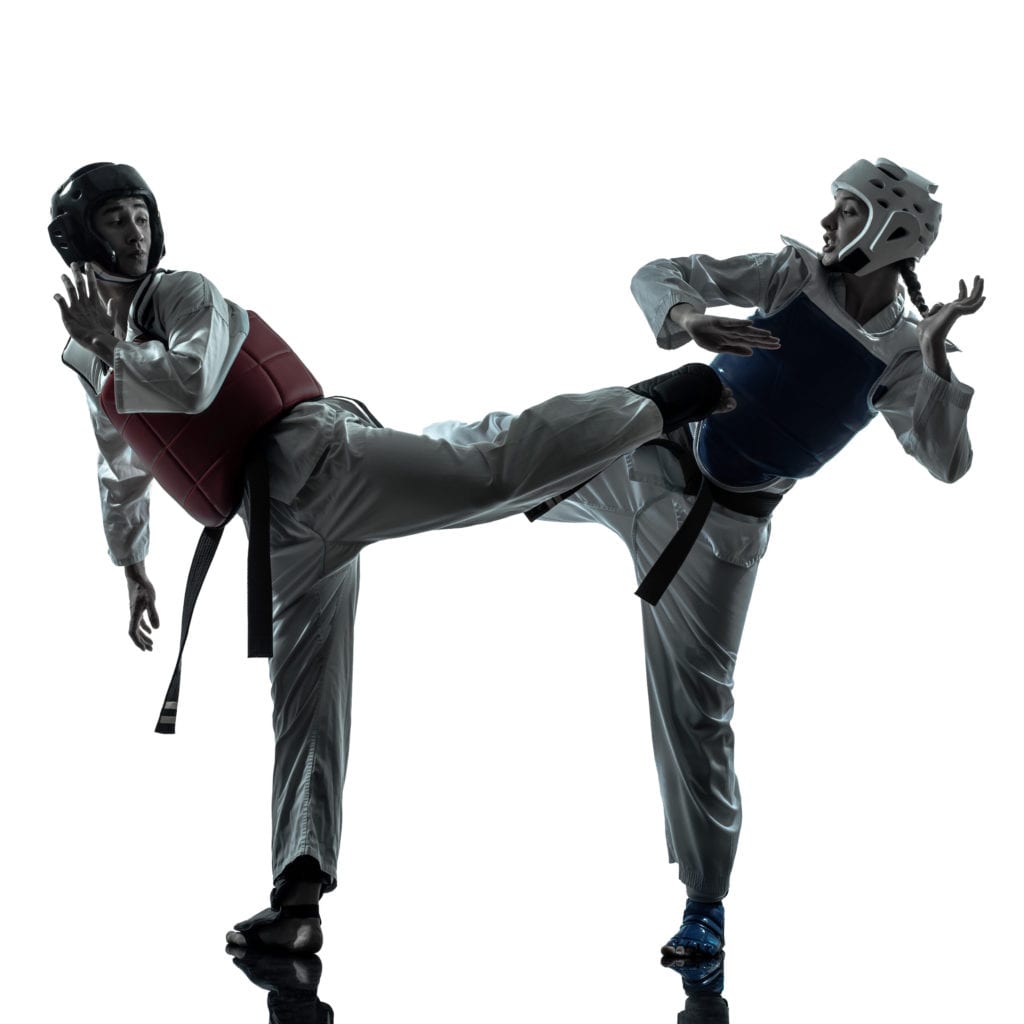

Like all sports, there are a set of rules and scoring metrics that govern the game. By establishing a governing set of rules and scoring metrics for Taekwondo has given the martial arts structure. In Taekwondo, there are also various equipment and facilities used by Taekwondo athletes or taekwondoin. The belting system gives Taekwondo some sense of hierarchy in assessing growth for each of the practitioners.
Taekwondo Rules


The Rules of Taekwondo are stipulated by the World Taekwondo Federation (WTF). Some of the guiding regulations posited in this document are as follows:
- Taekwondoins are required to face the referee and bow, and then face each other and bow before the inception of any bout.5
- The primary aim of taekwondoins is for them to land as many blows and kicks as possible on their opponent’s allowed target areas (i.e., torso and head).5
- There are three two-minute rounds for each contest, each with a one-minute break between each round.5
- There is a Golden Point Round (GDP) in a drawn match. The contestants go for the GDP round—a sudden death round—the first contestant to score wins.5
- Victory in a contest is achieved via a knockout, accruing the most points, or by default, opponent disqualification due to a penalty or gam-jeom.5
- Penalties are incurred via the following actions: (a). Face punch; (b). Knee attack; (c). Below the waist or groin attack; (d). Stepping outside the ring with both feet; (e). Turning your back to your opponent; (f). Pushing, holding, or grabbing your opponent; and (g). Feigning an injury.5
Taekwondo Scoring


The scoring system in Taekwondo is relatively straightforward. A player gets:
- One point for a valid punch to the torso.
- Two points are given to a proper kick to the torso.
- Four points are given for a turning kick to the head.
- Three points are given for a valid kick to the head.
- Five points are given for a valid turning kick to the head.
- One point is awarded for every gam-jeom against the opponent.
Taekwondo Equipment and Facilities
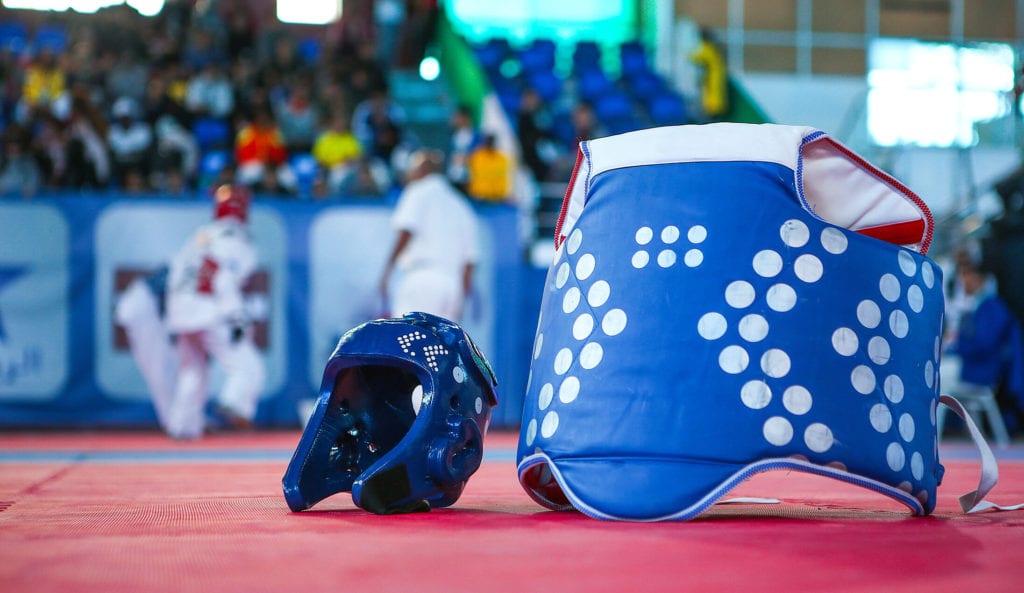

Taekwondo has its own set of equipment and facilities that cater to the sport. They are as follows:
- In a Taekwondo bout, taekwondoin compete against contenders of the same gender, age, and weight class.3
- The competition area is octagonal in shape and measures 8m or 26 feet in diameter.
- A competition white uniform or dobok must be worn.
- Other protective equipment are head guard, chest (trunk or torso) protector, groin guard, forearm guards, hand protectors, shin guards, and mouth guards.
- A colored belt that typifies the practitioner grade is tied around the middle of the dobok.
Taekwondo Belt Levels and Colors


The colored belt system was developed by the father of Judo, Dr. Jigoro Kano, as a visible way to measure his student progress. Gichin Funakoshi, a friend of Kano, and the founder of Shotokan karate, adopted the system. Byung Jick Ro, Funakoshi’s student and one of Taekwondo’s Fathers, introduced the system to Taekwondo in the 1940s. The Taekwondo belting system is as follows:
#1. The White Belt
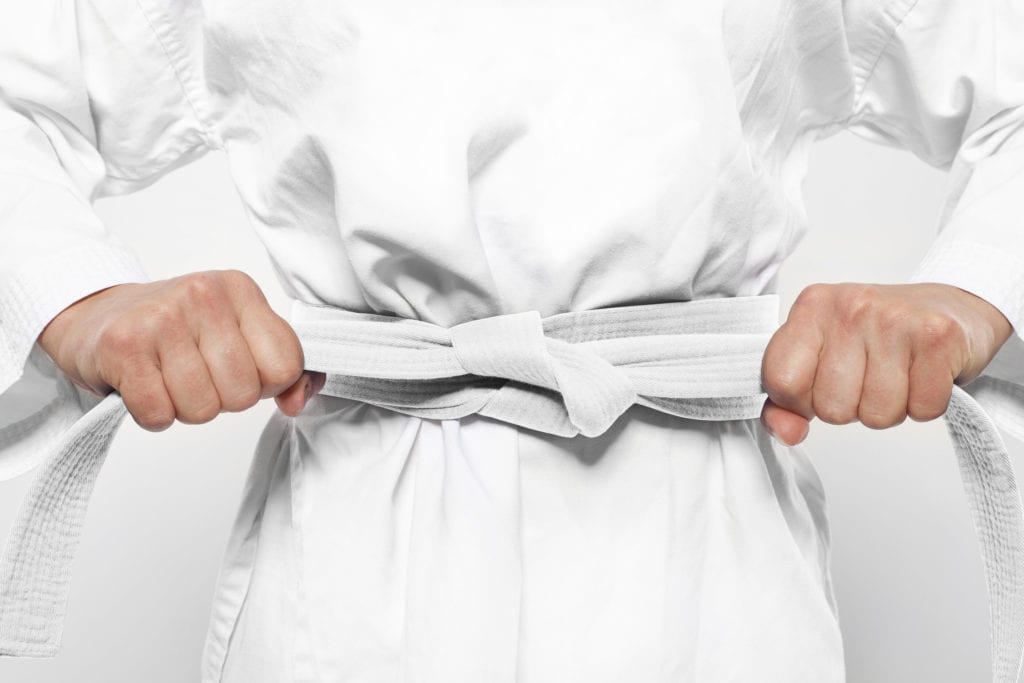

White typifies a tabula rasa state and a notion of purity. The mind is open—a ready receptacle to receive valuable martial arts lessons. This stage is known to instruct the taekwondoin in patience, virtue, strategy, mental and physical fortitude, and restraint power. It takes a taekwondoin approximately two months to advance in rank from this level.
#2. The Yellow Belt
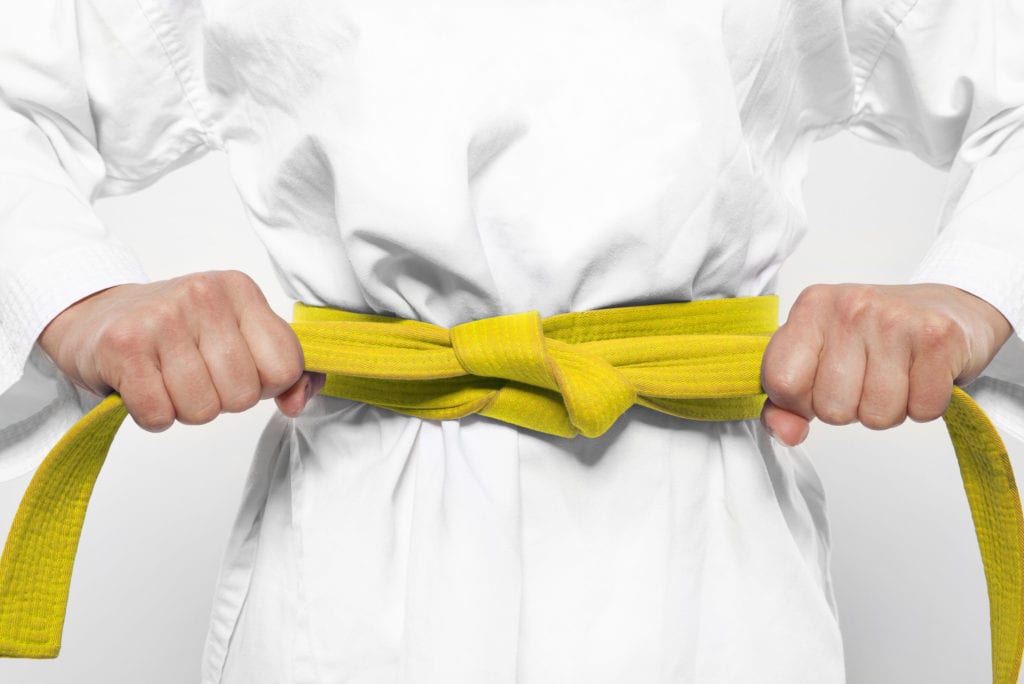

The yellow belt exemplifies the saturation of the sun. To the taekwondoin, there is a dawning of knowledge as he/she begins to understand and perceive the sunlight of the basics of the martial art’s techniques and skills. It takes approximately two months of dedication to advance to the orange belt.
#3. The Orange Belt
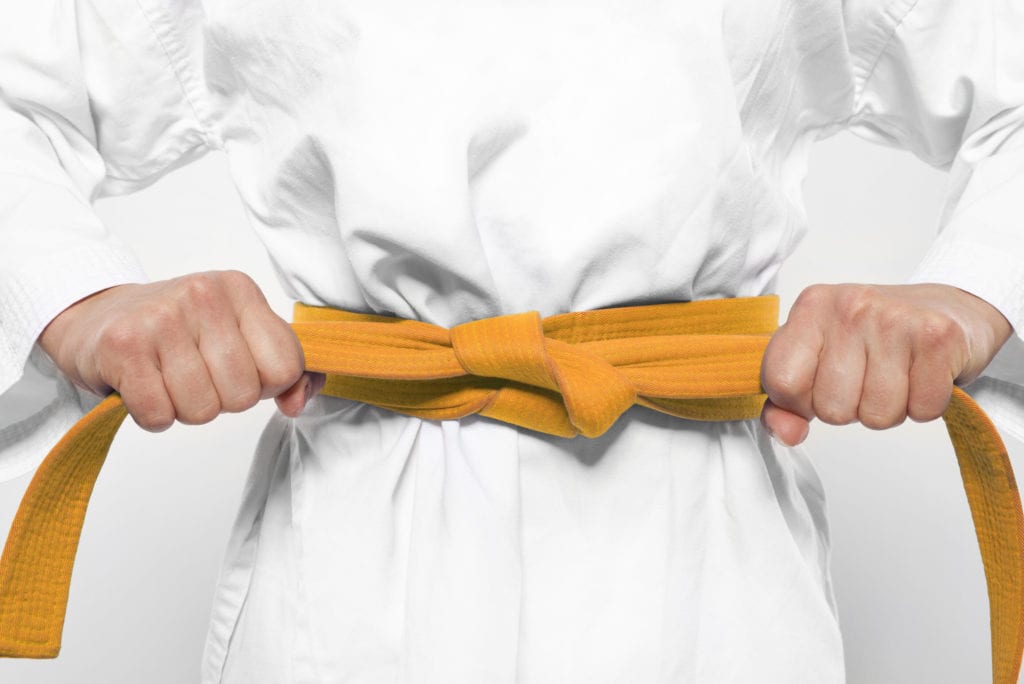

The orange belt is a metaphorical typification of the rising sun. The rising sun is a symbolism that dusk is making way for dawn to slide in. The taekwondoin is moving from the shadows of lack of knowledge to the light of imbibing knowledge. The student is advancing his basic techniques and growing. The estimated timing it takes for the student to advance in rank is two months.
#4. The Green Belt
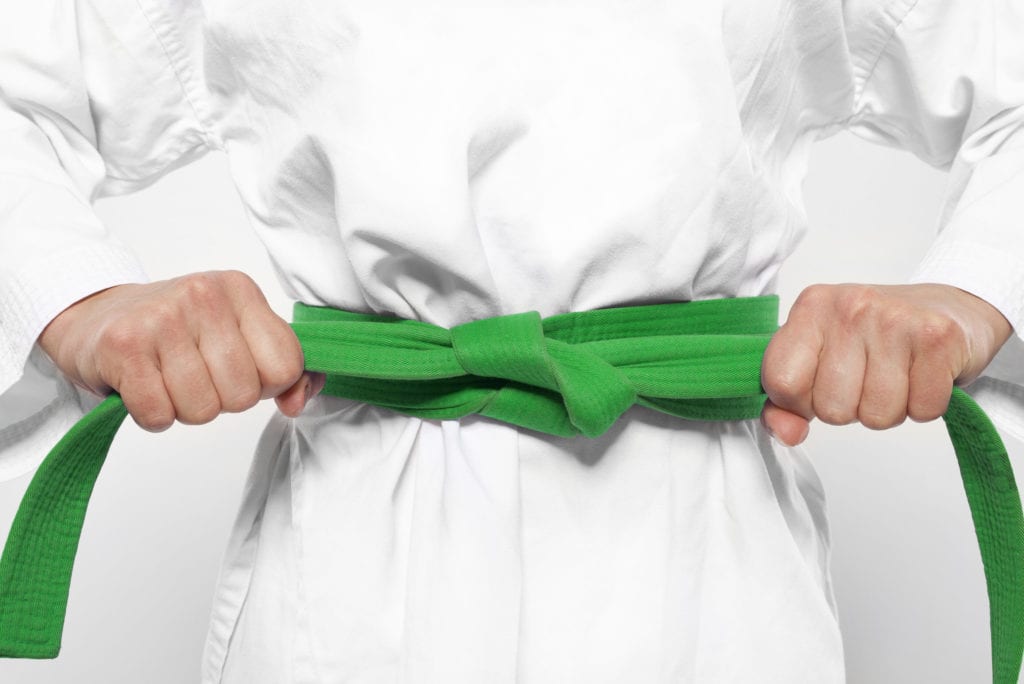

The green belt spells of spring—like the early greening-up of the maples, cherry, buckeyes, majority of popples, birches, willows, and the alders. At this stage, the taekwondoin continues to garner more knowledge as he/she advances the martial art skills and strengths. The components of the core techniques garnered are now working together in synchrony. The approximate time it takes to rank-up to the next level is approximately three months with consistency.
#5. The Purple Belt
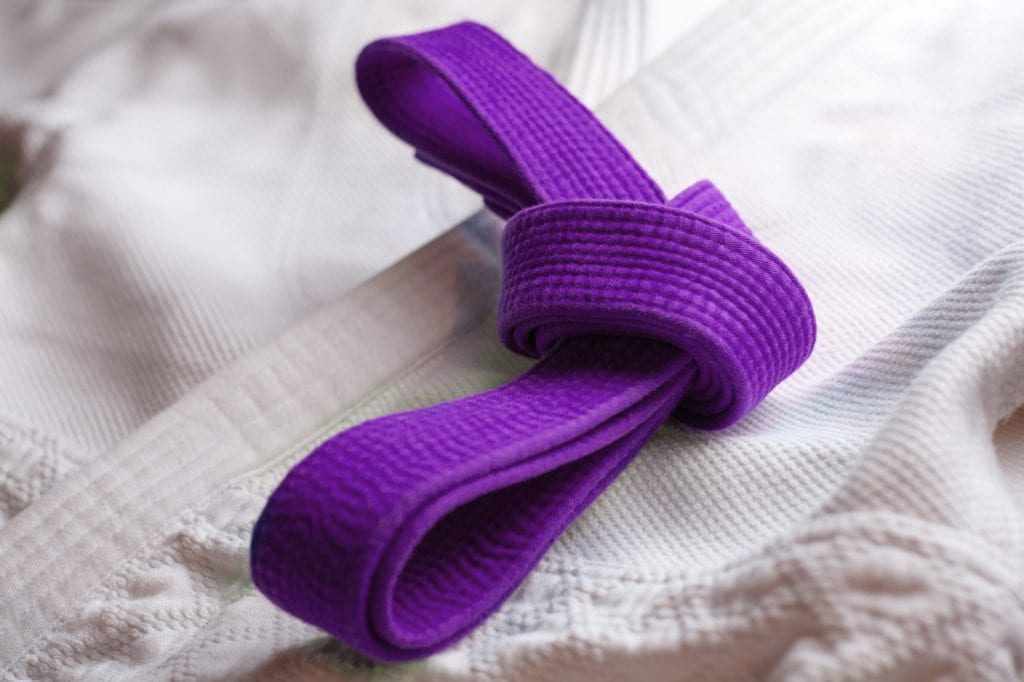

The purple belt is the halfway point of attaining a black belt in Taekwondo. This stage has a metaphorical comparison to mountain climbing. It is like reaching the midway point of climbing the highest peak globally—Mount Everest. The midway point to reaching the summit of Everest is at Nepal’s Everest Base Camp (EBC) sits at 17,598 ft / 5,364 m at the foot of the highest peak in the world—Mount Everest (29,029 ft / 8,848 m). Despite having attained this height, there is still steeper and more arduous heights to scale before reaching the summit of training the taekwondoin. The approximate time it takes to advance in rank is six months.
#6. The Blue Belt
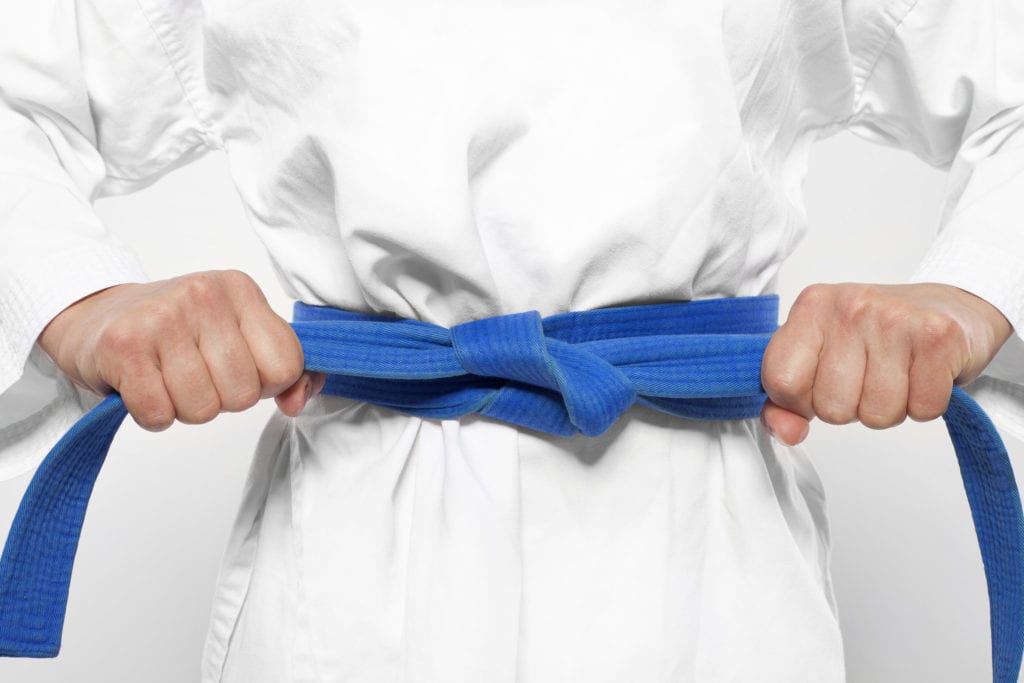

Blue symbolizes the sky. For the taekwondoin, the sky is not just a limit to attain and stop. However, it is a stepping stone to greater heights. The student at this stage is reaching for greater heights in technical mastery of the martial art. At this level, this belt is symbolic of ambition. As the taekwondoin goes higher in skill, he must also wear the cloak of humility and patience—just like the skies wear the Elysian tapestry of the clouds to mask its vastness. The approximate time it takes to advance in rank is six to eight months.
#7. The Brown Belt
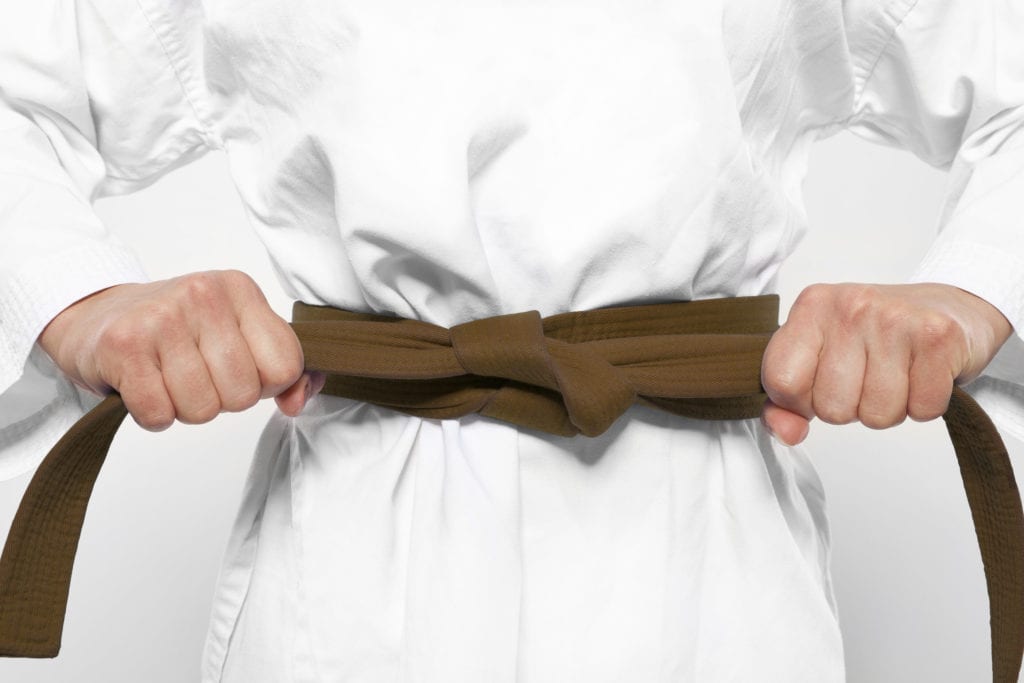

Brown is symbolic of the earth. The early greening maples, cherry, buckeyes, majority of popples, birches, willows, and the alders find their rooting in the soil. The roots of these trees are firmly anchored to the ground for stability, nutrition, and continuity. At this stage of the taekwondoin’s learning journey, he/she has gained mastery of the martial arts basics and developed deep roots in Taekwondo. The belt is symbolic of a firm foundation in the learnings and techniques of the sport. The student is continually seeking excellence at this stage. The approximate time it takes to advance in rank is about twelve months.
#8. The Red Belt
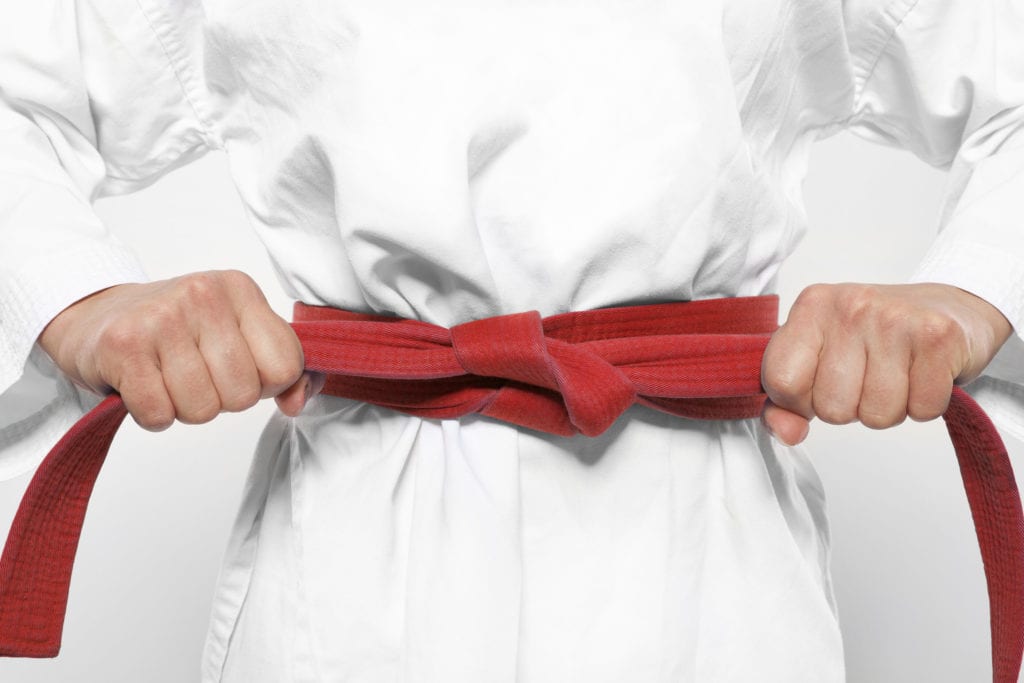

The red belt symbolizes the setting sun, fire, and danger. The taekwondoin has immersed themselves into all martial arts techniques at this stage but still lacks control. The absence of self-control is akin to a raging fire that licks up everything in its paths with utter destruction. According to Fandom, “Taekwondo endeavors to strengthen the sure perspectives of an individual’s character: Respect, Courtesy, Goodness, Trustworthiness, Loyalty, Humility, Courage, Patience, Integrity, Perseverance, Self-control, an Indomitable Spirit and a sense of responsibility to help and respect all forms of life.” As we can see, “self-control” is a core of this philosophy. Hence, the red belt phase is a time for achieving physical and mental discipline. The approximate time it takes to advance in rank is 12 months.
#9. The Red-Black Belt
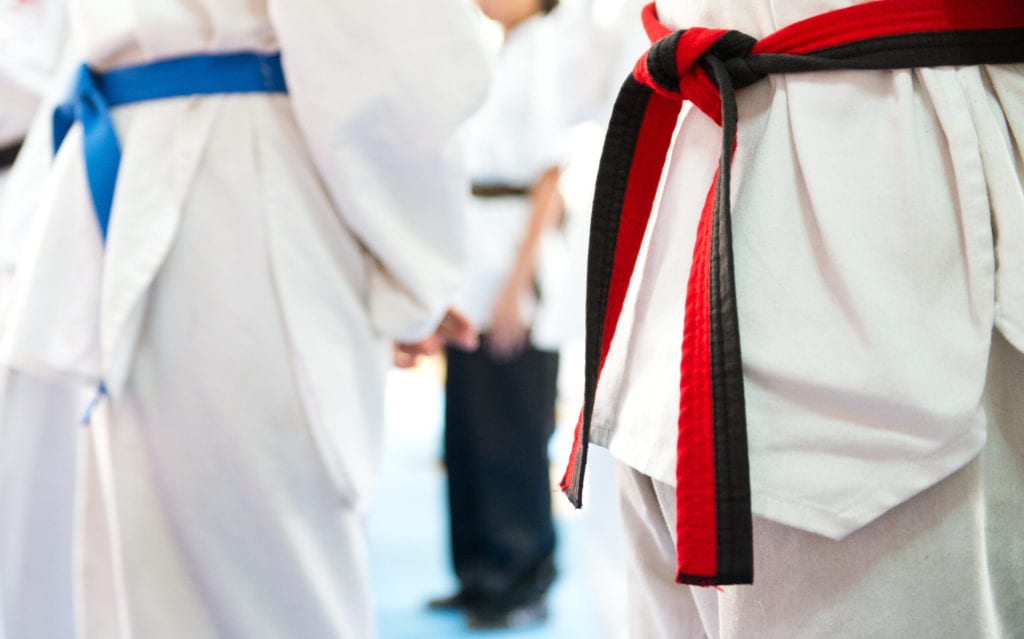

The Black-Red belt is symbolic of the dawn of a new day. The red, symbolizing the sun, breaks through the darkness. According to the Songahm (Thee) Belt Meanings, “The previous day has ended giving way to a new dawn. At this stage, the taekwondoin must commence a new phase of training—that of becoming a black belt.” The approximate time it takes to advance in rank is 12 months.
#10. The Black Belt
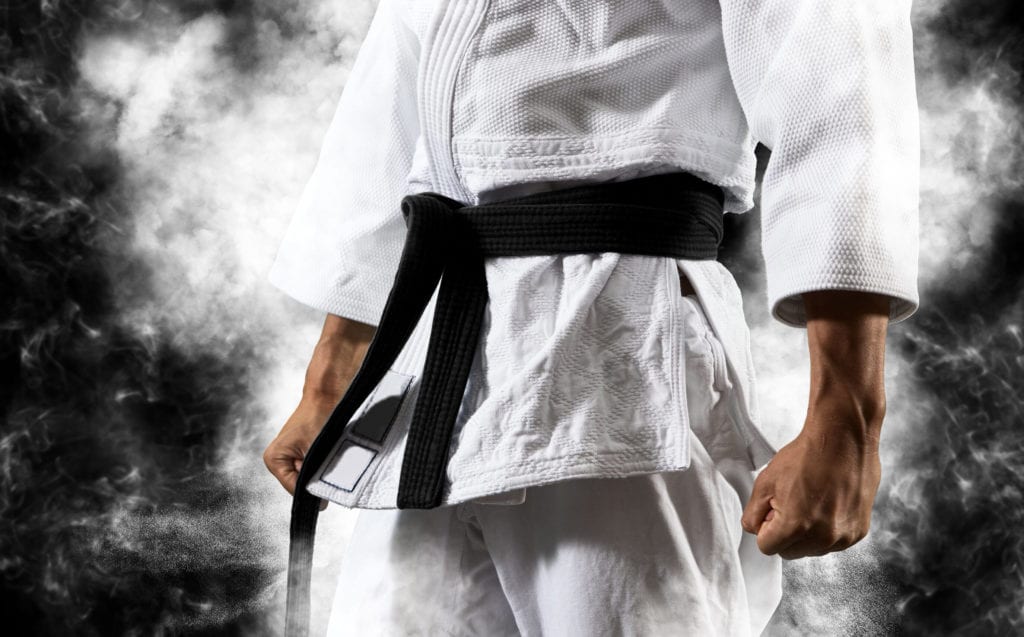

The color black is symbolic of mystery, power, elegance, and sophistication. The black color creation happens when all the light spectrum colors have been absorbed into an object. According to the Songahm (Thee) Belt Meanings, “the object has “taken control” of all the colors and retained them. If one color “escapes,” the object would no longer be black, but would appear as the escaped color. The pupil has comprehended the nine geup (grades of Taekwondo). He/she has “absorbed” all the knowledge of the color ranks and overcome or “mastered” that level of training.” The Black Belt student will now mentor and teach other students. As well, they are expected to continue learning and achieving new levels and skills.


After the taekwondoin attains the black belt level, it marks the beginning of a new journey in mastering the martial arts. Dan (단) is typically used in Korean martial arts to typify a black belt. The Dan Ranks as stipulated in Fandom dot com are as follows:
- First-Degree Black Belt – Il dan (일단). Also known as the Assistant Instructor, or Junior instructor – jo kyo nim (조교님).
- Second-Degree Black Belt – Ee dan or yi dan (이단). Also known as the Instructor – Kyo sa nim (교사님).
- Third-Degree Black Belt – Sam dan (삼단). Also known as Assistant Master – Boo sa bum nim or Kyo bum nim (부사범님).
- Fourth-Degree Black Belt – Sa dan (사단). Also known as the first “master” rank – Sa bum nim (사범님).
- Fifth-Degree Black Belt – Oh dan (오단).
- Sixth-Degree Black Belt – Yuk dan (육단).
- Seventh-Degree Black Belt – Chil dan (칠단). This is often called “grandmaster” or, more correctly, the “head of a school” in English – kwan Jang nim (관장님).
- Eight-Degree Black Belt – Pal dan (팔단).
- Ninth-Degree Black Belt – Gu dan (구단). Also known as the Chief Master – Chong kwan Jang nim (총관장님).
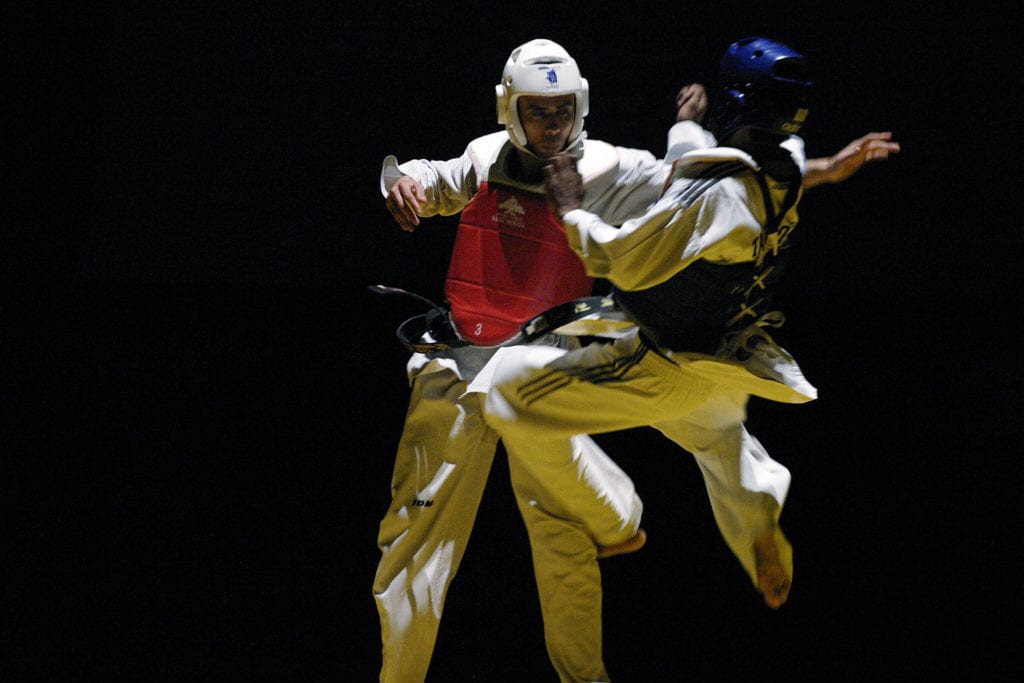

The belting system in Taekwondo is one that spells progress and a continuous improvement track. However, the core of moving from one level to the other hinges on dedication. It will take a taekwondoin dedicated to learning Taekwondo for about three to five years to become eligible to test for the 1st Degree Black Belt. Some schools require their students to have between four to five years before they qualify to test for the 1st-degree black belt (Il dan (일단)). The common denominator to show this progress is hard work, determination, and an unwavering dedication to perfect their craft in the art.
Modern History Top 5 Taekwondo Greats
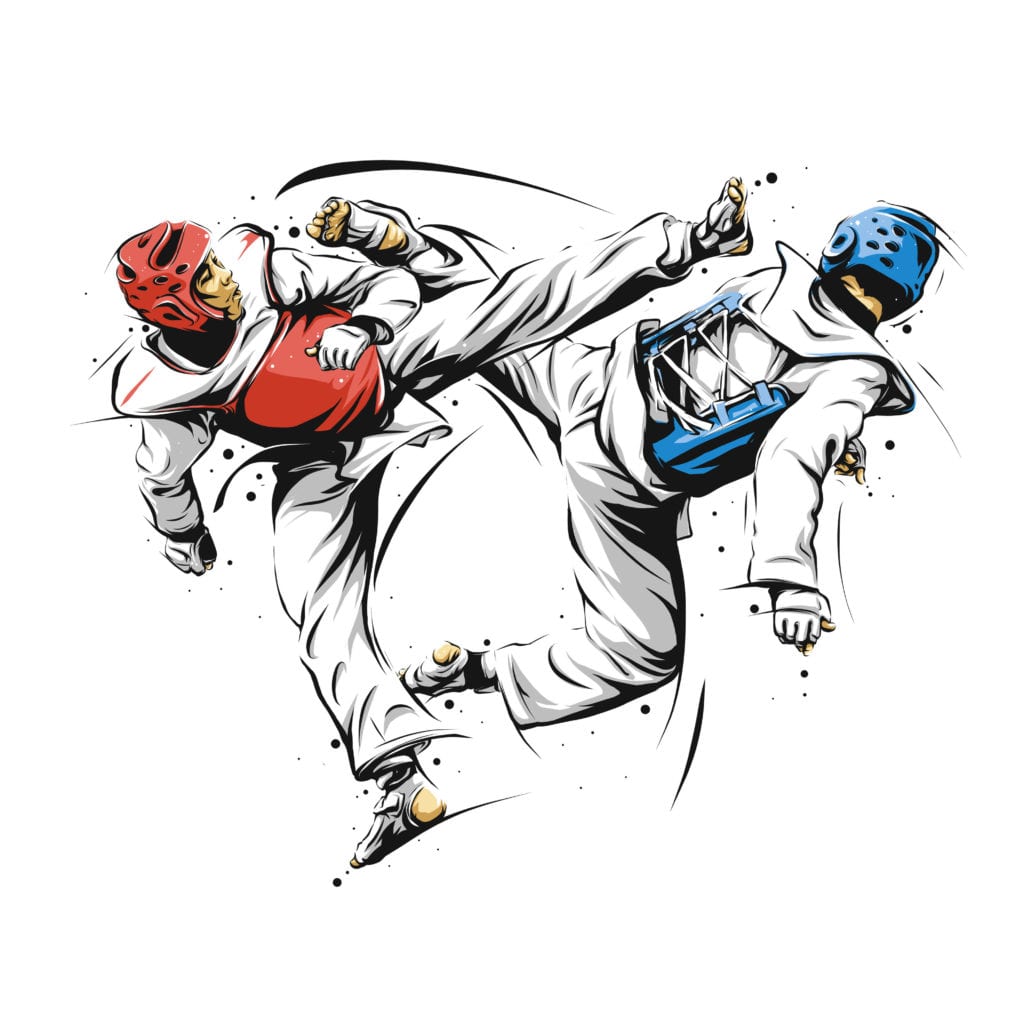

Spanning from the time that the original masters of twelve South Korean Taekwondo masters came together in the 1960s to start the Korean Taekwondo Association (KTA), many greats and grandmasters have arisen in the sports. Time and chance will fail me from delving into each of their lives. However, I will restrict myself to just covering a few names in modern history that have gone ahead to leave a mark in Taekwondo’s world. Let us look at Modern History Top 5 Taekwondo Greats.
Hadi Saei
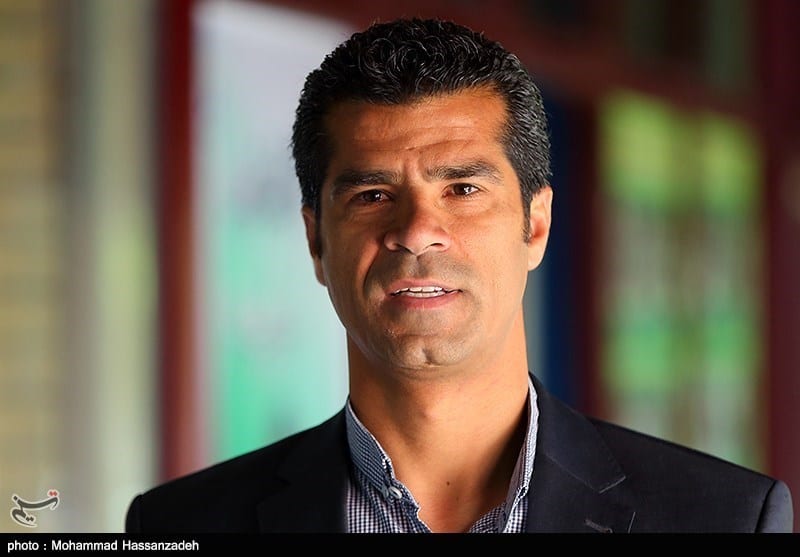

Hadi Saei is Iran’s most successful athlete. He stands as the most titled champion in Taekwondo. He stands with the record of nine world-class title winnings (i.e., two Olympic titles in 2004 and 2008, two world championships titles, four world cup titles, and one world Olympic qualification tournament).
Steven López


The American born Steven López is one of the best in the game. He is the only one to win the world championships a record five times. He also has three Olympic medals (two gold and one bronze) and has won five gold at Pan American tournaments.
Hwang Kyung-seon


Hwang Kyung-seon from South Korea is the only Taekwondo players apart from Hadi and Steven to have the highest number of Olympic medals—three. She is the most successful female Taekwondo player ever in modern history. She has also won two World Championships and an Asian game.
Joel González
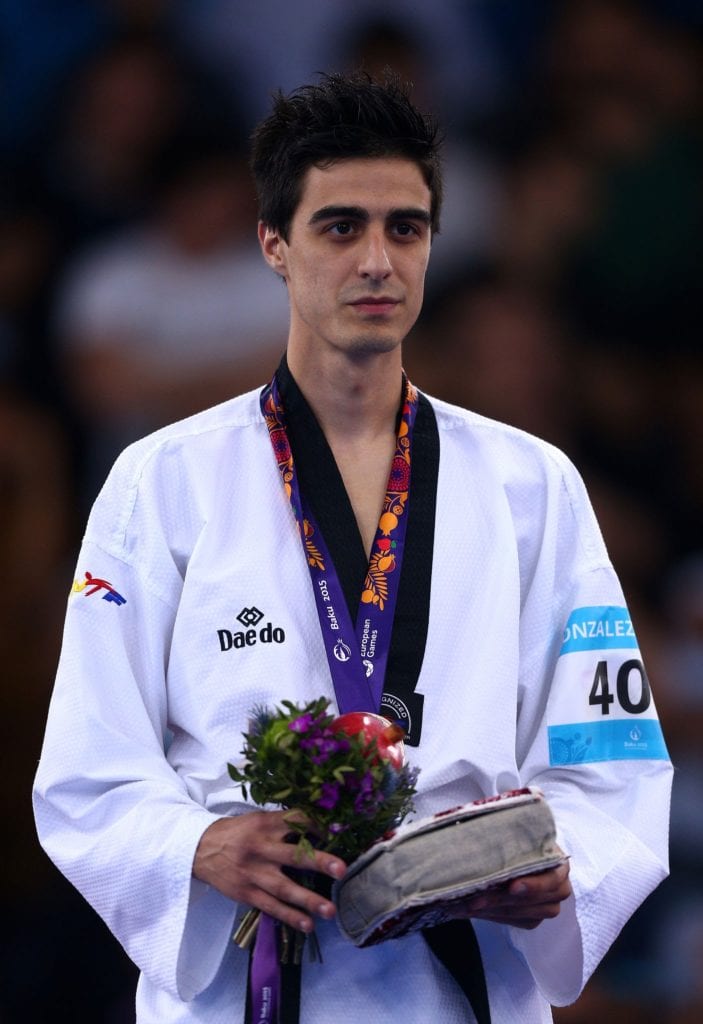

Spanish born Joel González is one of the most successful taekwondo players to have emerged from Spain and has won every competition he has participated in. He is two times World Champion, two times European Champion, and got his Olympic gold in 2012 in the 58 kg (128 pounds) category.
Carlo Molfetta


Carlo Molfetta is one of Italy’s most excellent when it comes to Taekwondo. He has fought in the lightweight, middleweight, and featherweight classes—winning medals in every category. He has an Olympic gold, two silver, and one bronze at World Championships, one gold, and silver at European Championships.
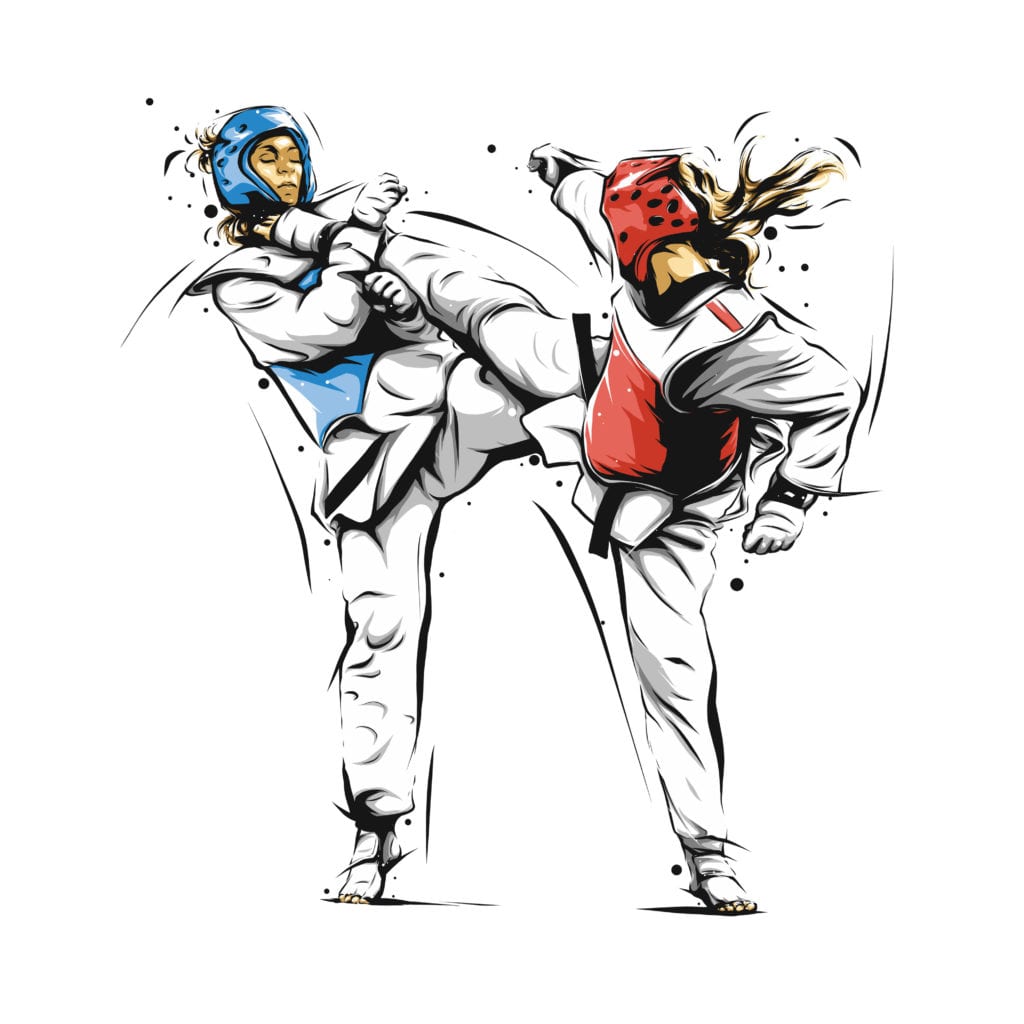

Apart from the greats in Taekwondo, some practitioners have gone to become celebrities. For instance, Chuck Norris, in his lifetime, attained 8th degree Grand Master status in Taekwondo. He even went ahead to create his own Taekwondo system called Chun Kuk Do (meaning “The Universal Way”). Other prominent figures have attained high levels in Taekwondo. For instance, Willie Nelson (5th-Degree Black Belt), Sara Michelle Geller (1st-Degree Black Belt), Chloe Bruce (4th-Degree Black Belt in Tang Soo Do (a variant of Taekwondo), Wesley Snipes (3rd-Degree Black Belt), just to mention but a few.
As stated, this list is not exhaustive. As the sport of Taekwondo continues to evolve, many other greats will continue to emerge.
10 Things You Didn’t Know About Taekwondo
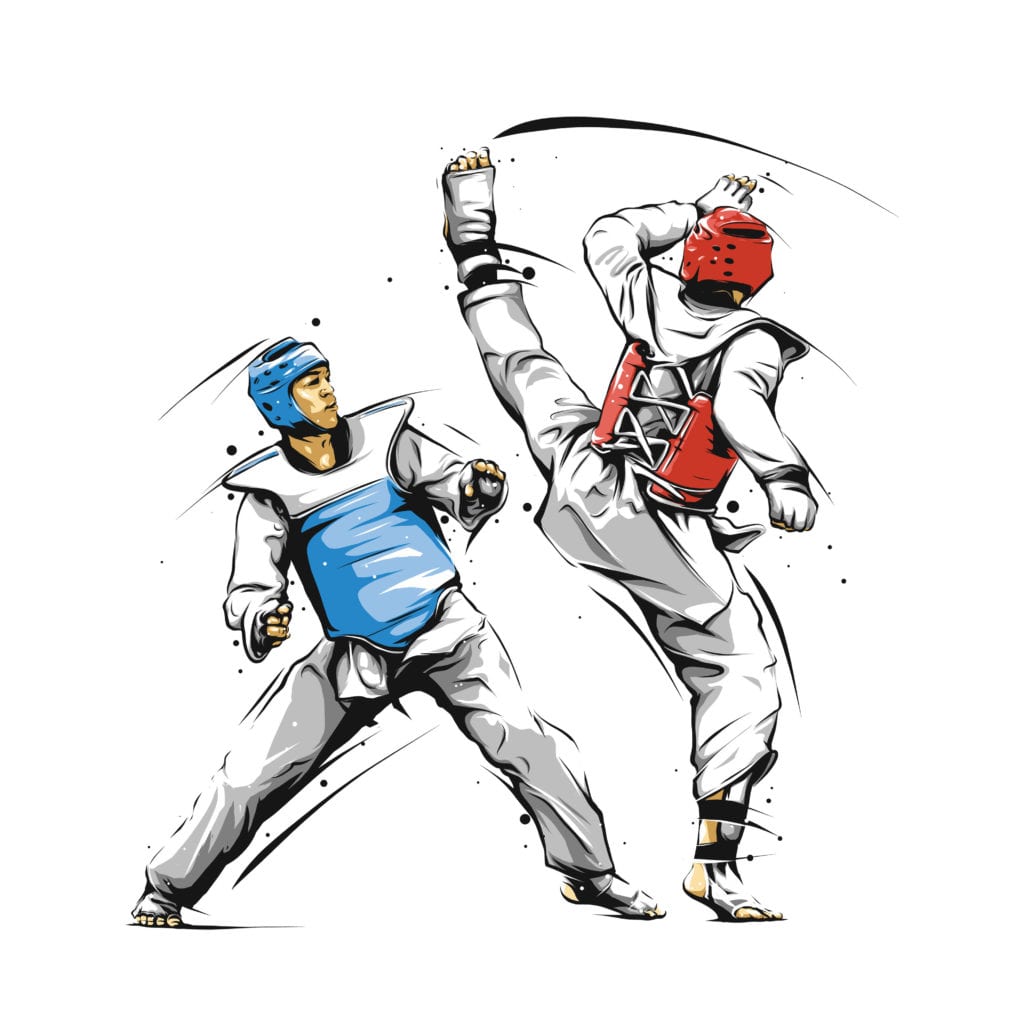

So far, we have covered a Herculean load of information about the sport, Taekwondo, and it has been an exciting journey thus far. We have taken a journey through the past to the present in unearthing sundry facts about this martial arts. So, what can we say are some key ten things you didn’t know about Taekwondo? Let it suffice us to delve into this point listicle at this juncture, despite having to garner much more knowledge through the whole article as a whole. So, let us see some of these points in brief.
- Taekwondo is a Korean martial art form originally taught for combative purposes (i.e., warfare, self-defense, and physical fitness).
- Taekwondo is quite a famous martial arts sport. About 70 million people practice Taekwondo globally, and the number keeps growing.
- Compared to Mixed Martial Arts (MMA), Taekwondo is believed to have a lower injury rate, making it a safer combative sport.
- The Olympic Taekwondo comprises four competition classes for both sexes. For men, these are less than 58 kilograms (128 pounds), 68 kilograms (150 pounds), 80 kilograms (176 pounds), and over 80 kilograms (176 pounds). For women, the categories are less than 49 kilograms (108 pounds), 57 kilograms (126 pounds), 67 kilograms (148 pounds), and over 67 kilograms (148 pounds).
- Taekwondo has been progressively increasing in fame over the past six decades, and its growth is not letting up soon.
- Taekwondo is not just a combative sport or martial arts defined by just mere kicks and punches. The martial arts dwells heavily on the ability to concentrate, a rich combat doctrine, the art of self-defense, and physical fitness.
- On April 9, 1976, the International Military Sports Council registered Taekwondo as an Olympic Games event.
- Taekwondo is also an Olympic sport that has full medal status.
- Taekwondo is a system of balanced body drills or techniques structured for self-defense and counterattack in unarmed conflict situations. In Taekwondo, the hands and feet become the choice weaponry for combat and defense.
- Taekwondo training comprises strengthening the body through the practice of the various attack and defense forms.
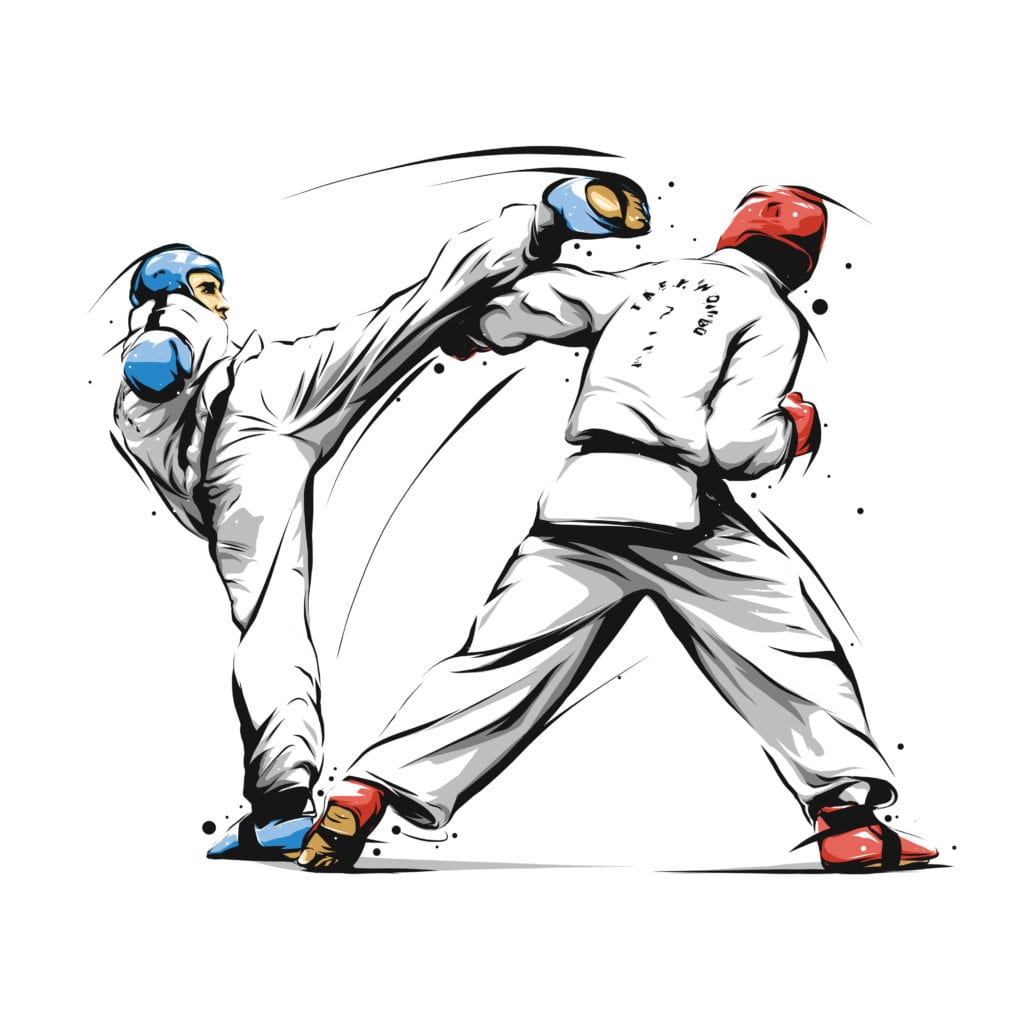

Taekwondo is an art, a discipline, a core technique that brings equilibrium to the body, soul, and spirit. Upon learning the tenets of Taekwondo, the taekwondoin becomes a lethal power bank of methods. Taekwondo’s most outstanding aspect is the grounding it gives its practitioners via the ingraining of core philosophies that infuses a halcyon rhythm to the human soul.
“Just as a stool requires three legs to stand upright so the taekwondoist must cultivate basic skills, meaningful forms, and effective sparring in order to have both feet firmly planted in the art” ― Doug Cook, Taekwondo: A Path to Excellence.
The craft of the martial arts and combative sports Taekwondo is not about the exertion of force without cause. The practitioner must always know that they are living weapons, and if misused, could become perilous forces. Hence, the power of the taekwondoin is their ability to contain the power of their emotion. Practitioners must always realize the potency of what they have become via training—a controlled lethal force.
In the words of a Lakshya Bharadwaj, “Martial Arts does not teach you how to fight, it teaches you why not to.” He also said that “The plan is to never pick a fight, but the promise is to never back down from one.” That is the essence of Taekwondo—self-control, and peace. However, in the face of an inevitable battle, the art’s combat and defenses are brought to bear.
References
- International Taekwondo Federation (ITF). (n.d.). Taekwon-do founder. Retrieved from https://www.itftaekwondo.com/about-us/founder/
- Liveaboutdotcom. (n.d.). A history and style guide of Tae Kwon Do. Retrieved from https://www.liveabout.com/history-style-guide-tae-kwon-do-2308282
- Rulesofsport.com. (n.d.). Taekwondo rules. Retrieved from https://www.rulesofsport.com/sports/taekwondo.html#:~:text=Taekwondo%20matches%20are%20contested%20over,only%20allowed%20to%20the%20body.
- Southwick, R. (1998). A brief history of Taekwondo. Retrieved from https://msu.edu/~spock/history.html
- Watta, E. (2020). Know your sport: Taekwondo rules, scoring, and equipment. Retrieved from https://www.olympicchannel.com/en/stories/features/detail/know-your-sport-taekwondo-rules-scoring-equipment/
Sports
10 Things You Didn’t Know About Krav Maga
Krav Maga is a powerful, dynamic, and efficient modern self-defense and fighting system, with realistic fight training. It could save you in dangerous circumstances.
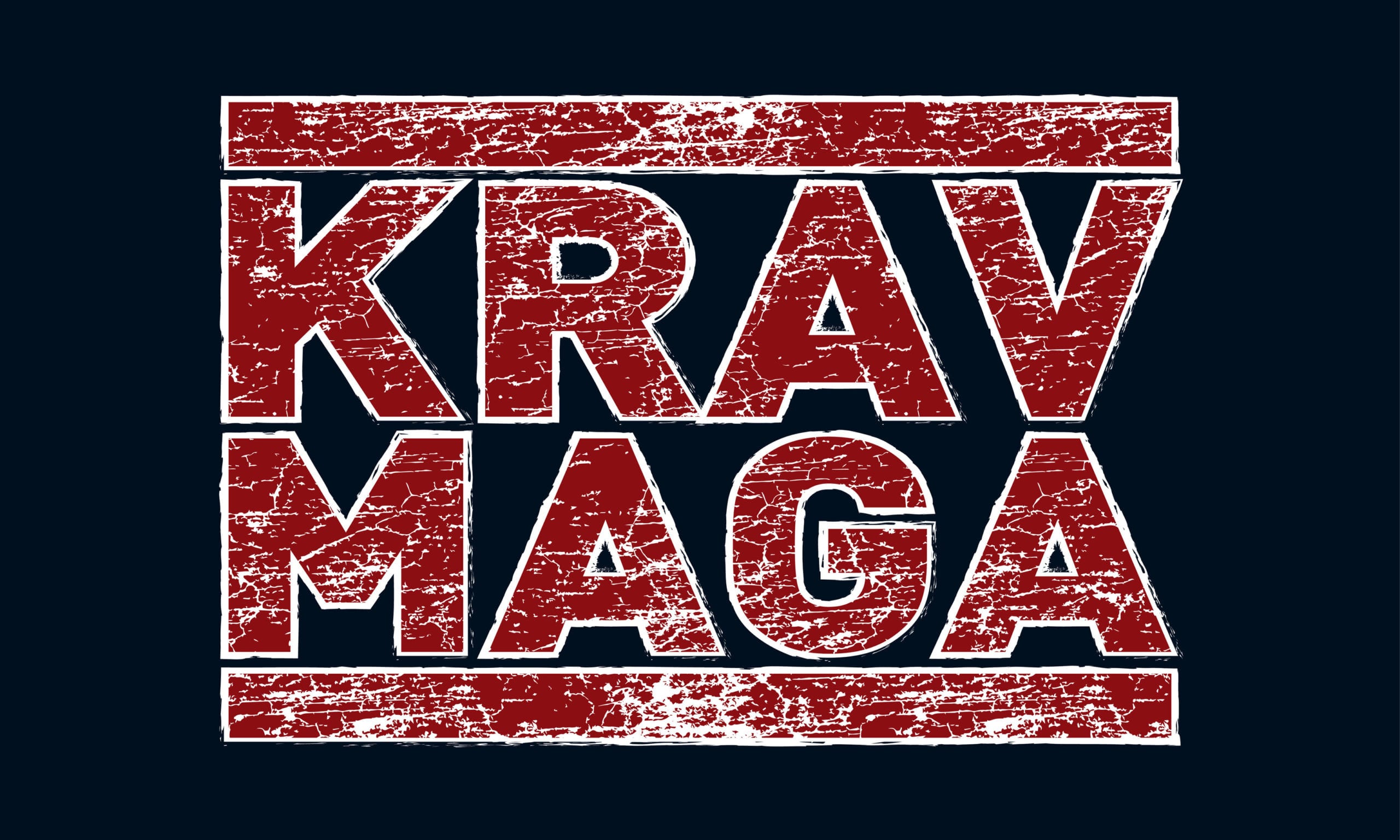

There are times that we are faced with dangerous situations that require us to stand our ground and defend ourselves. In such circumstances, it is either we protect ourselves, or we face the danger of annihilation. In such scenarios, the only way of self-defense is by physical means. If you’re looking to learn exceptional, close-quarter, hand-to-hand, self-defense skills―and also get in shape in the process―look no further than Krav Maga.
Krav Maga? I hear you say in surprise. What on God’s green earth is Krav Maga?
Well, that’s precisely what this article is all about.
Krav Maga translated ‘Contact Combat,’ or קְרַב מַגָּע in Hebrew is a powerful, dynamic, and efficient contemporary self-defense and fighting system, with realistic fight training. Krav Maga incorporates fighting techniques from martial arts, such as boxing, judo, karate, ju-jitsu, wing Chun, wrestling, Muay Thai, and aikido.
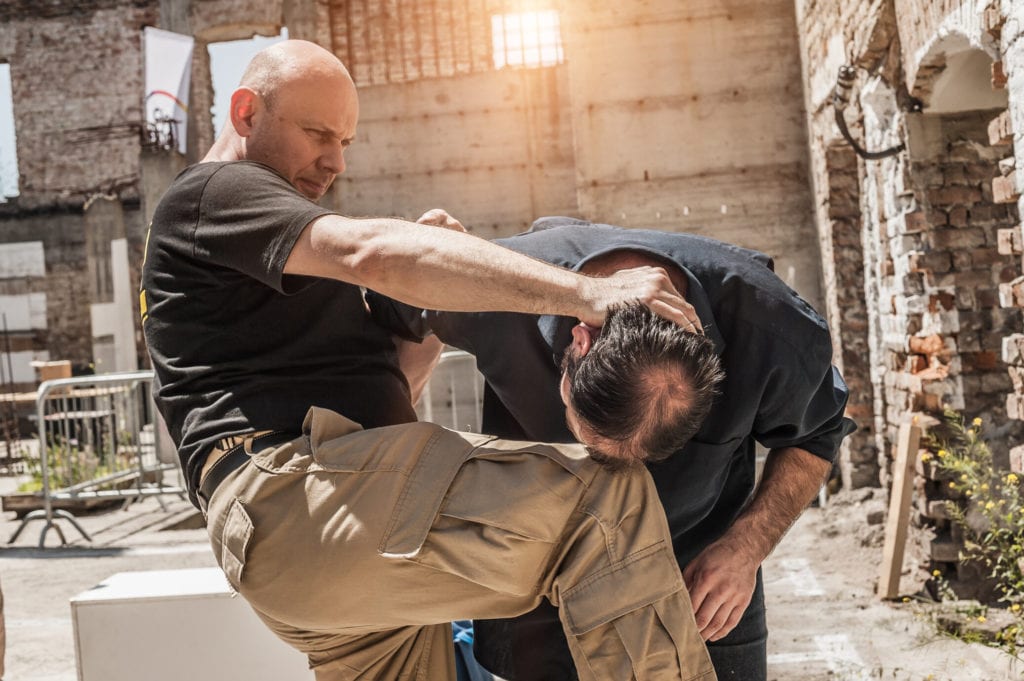

The origin of Krav Maga is rooted in the street-fighting experience of Imi Lichtenfeld, an Israeli boxing and wrestling champion, who lived in Czechoslovakia in the 1930s, and who used his martial arts skills of boxing and wrestling to defend Jewish-occupied neighborhoods against anti-Semitic gangs.
Although Imi Lichtenfeld was skilled in both martial arts fields (i.e., boxing and wrestling), he soon learned they weren’t quite enough when he came face-to-face with the violent nature of street fighting. This harsh reality not only compelled him to rethink his entire perception of combat, but it also prompted him to start developing a series of fighting skills and techniques that later earned global recognition as Krav Maga.
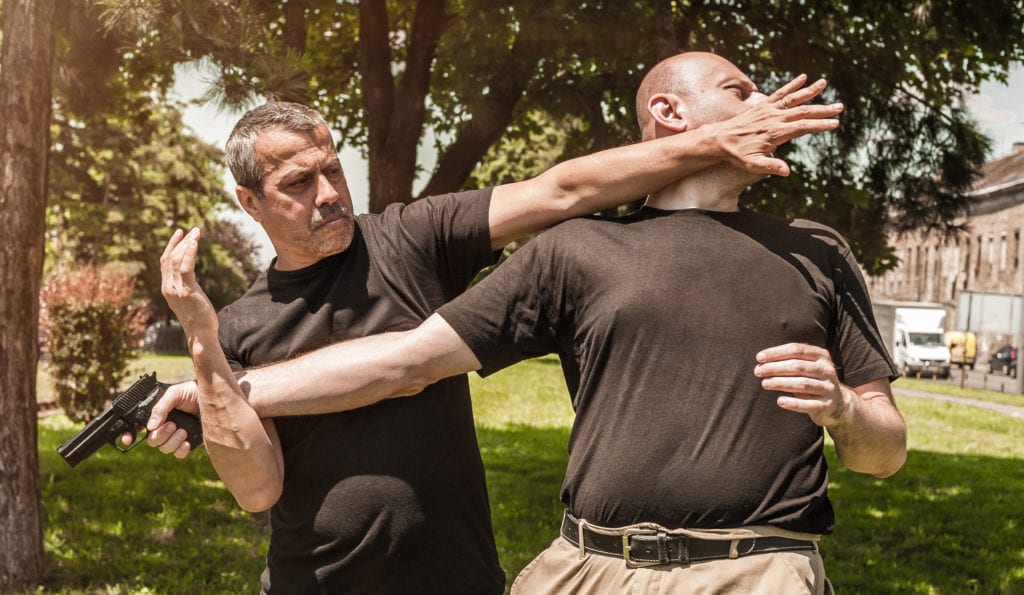

After Israel’s nation was founded in 1948, and the Israeli Defense Force (IDF) was created, Imi Lichtenfeld was appointed Chief Instructor for Physical Fitness and Krav Maga at the IDF School of Combat and Fitness. During his 20-year service to the IDF and other Israeli security forces, he continued to develop and improve his techniques of Krav Maga. It should be pointed out that Krav Maga isn’t exactly a type of sport; it is essentially a vicious self-defense fighting system.
The Grading System


Most organizations teach Krav Maga to use a color belt grading system derived from the judo ranking system. The color belts for Krav Maga are ranked in the following order: Yellow, Orange, Green, Blue, Brown, and Black. This was Imi’s idea to bring Krav Maga into the martial arts and combat sports family.
The grading system is further divided into three major categories: Practitioner (P), Graduate (G), and Expert (E). Each class consists of 5 ranks and is usually abbreviated thus: P1-P5, G1-G5, and E1-E5. This system was developed by Eyal Yanilov, the current Chief Instructor of Krav Maga Global. He was a direct apprentice of Eli Avikzar (i.e., a top instructor of Krav Maga in the early days of the sport) and Grand Master Imi-Sde or (Lichtenfeld), founder of the Krav Maga system.
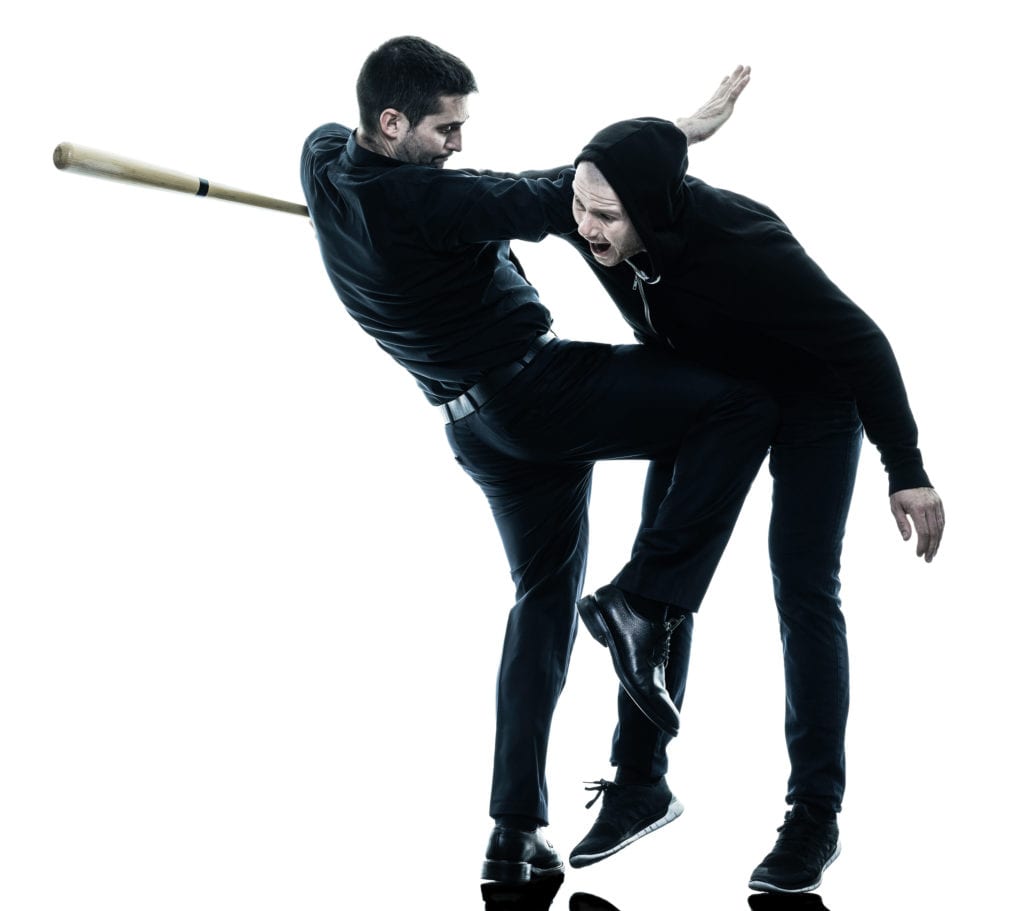

The Practitioner (P) Levels (P1 to P5) are typically student levels and, consequently, form the bulk of people learning Krav Maga. They are known as “Operators.” They are greenhorns learning each Krav Maga methodology (i.e., strikes, defenses, basic 3PP (Third Party Protection), and proper decision making) from scratch.
The Graduate (G) Levels (G1 to G5) is when the students transition into the “Fighter” stage of Krav Maga. To advance to these levels, students must demonstrate a clear adeptness in all practitioner level techniques. Here, they are introduced to more complicated scenarios, where they learn various advanced strikes and defenses. At this stage, they start learning to deal with escalating problems and warding off multiple attack situations.


The Expert (E) Levels (E1 to E5) is when the graduate students transition into the “Warrior” stage of Krav Maga. The expert levels training cover advanced military fighting techniques. As a result, they are strictly for experts that have mastered both the Practitioner and Graduate Levels techniques; people with outstanding fighting skills. At this stage, the students are nimble and agile―able to transition from one defense formation to the next without pause during variable threats they may face.
Anyone who advances beyond E5 is regarded as a Master. But only a small and select group of people are privileged to wear this rank of honor. Apart from Grand Master Imi-Sde Or (Lichtenfeld) (RIP), founder of the Krav Maga system, the few masters so far according to Krav Maga Global are Eyal Yanilov (Master Level 3), Ze’ev Cohen (Master Level 2), and Tommy Blom (Master Level 1). Masters are people who have spent a lifetime of dedication to learning and teaching Krav Maga.
10 Facts About Krav Maga


As we have seen in the preceding paragraphs, Krav Maga is more of a fighting system and a self-defense mechanism. However, it is most times lumped into the martial arts genre of sports. Now, what are some facts about Krav Maga that we can add to our knowledge block? They are as follows:
- Krav Maga is purely a self-defense fighting system that does not encourage its students to engage in confrontation. It is deployed only in extreme situations where your life is clearly in grave danger.
- Krav Maga is designed to keep you safe when you find yourself in life-threatening situations. And it does this by helping you develop a high sense of situational awareness to the point of swiftly disarming an attacker and ending any confrontation as rapidly and even brutally as possible.3
- Since the core objective is to de-escalate a violent attack, Krav Maga fighting skills are targeted at the most vulnerable parts of the human body to do so, such as gouging out the eyes, kick in the groin, head butts, etc.
- Krav Maga was first offered as a training course for civilians in 1972. Before this time, it had been restricted to the military and other related security agencies. It was first taught at the School for Trainers, situated at the Wingate Institute for Physical Education in Israel.2
- Krav Maga can be learned by just about anyone, irrespective of your body size. Even if you are a small person, Krav Maga fighting techniques are structured to help you out in any threatening situation by increasing your chances of fighting off a bigger attacker.3
- Krav Maga is not regarded as a martial art because a martial art is competition-focused since it is practiced as a sport and usually follows a set of rules. Furthermore, unlike traditional martial arts, where it takes years to achieve proficiency, Krav Maga is easier to learn but can pose its challenges. The core denominator for gaining this proficiency is discipline. Hence, with consistency and discipline, mastery could be reached within a relatively short time, ceteris paribus.
- As an aggressive self-defense fighting skill, Krav Maga is always evolving to suit dramatic changes in our day-to-day real-world experiences with violence. It is an organic self-defense mechanism.
- Krav Maga also functions as a fitness exercise that helps you develop physically. It consists of various combative fitness exercises and other related challenging workout activities; it helps build and strengthen your core muscles, which invariably improves your balance and posture.
- Krav Maga also enhances mental development. It increases your range of focus and sharpens your mental alertness. It induces sound sleep and has a unique way of synchronizing mind and body, blending them and enabling them to function as a strong unit.1
- In 1972, an Israeli organization, known as Federation for Krav Maga and Self Defense―with a strict focus on Imi Lichtenfeld’s method―was formed to protect and promote Krav Maga in its purest form. However, in 1974, the organization was renamed the Israeli Krav Maga Association.2


Self-defense is the act of defending one’s person when physically attacked. If you are clueless about what to do in such a scenario, you are pretty much a sitting duck and bear the lethal attack’s brunt, which could be fatal. However, you are justified to defend yourself in response to an immediate threat. In such precarious situations, we need to make every attempt to escape the danger (i.e., “duty to retreat”). If this fails and we are under attack by the aggressor, we need to defend ourselves. Krav Maga can help slow down a lethal attack to give us room to escape from the situation.
Imi Lichtenfeld once said that we should “Krav Maga, so that one may walk in peace.” By having such knowledge, you are at peace knowing that you have a standing chance to fight and live should you ever fall into a precarious situation. He also said that “Krav Maga heightens perception and transforms fear into something more productive.” If you are in a perilous position, you come under the pangs of fear. Via Krav Maga, your fear now becomes your opportunity to live―a fighting chance to keep existing.
References
- Eitan: Krav Maga (2017, January 29). What are the Benefits of Krav Maga Training? Retrieved from https://eitankravmaga.com/krav-maga-for-beginners/benefits-of-krav-maga-training/
- Raley-Lusk, S. (2015, November 9). Israel Self Defense: 5 Facts about the History of Krav Maga. Retrieved from https://www.newsmax.com/fastfeatures/israel-self-defense-krav-maga-history/2015/11/09/id/701356/
- Westchester, S. (2016, 29 September). 3 Facts you should know about Krav Maga Training. Retrieved from https://nearsay.com/c/182582/141967/3-facts-you-should-know-about-krav-maga-training.
Sports
Should Violent Video Games Be Banned?
Video gaming has impacted our culture. Kids and adults alike are very much drawn to video gaming, especially the violent ones. Should we turn a blind eye or be cautious?
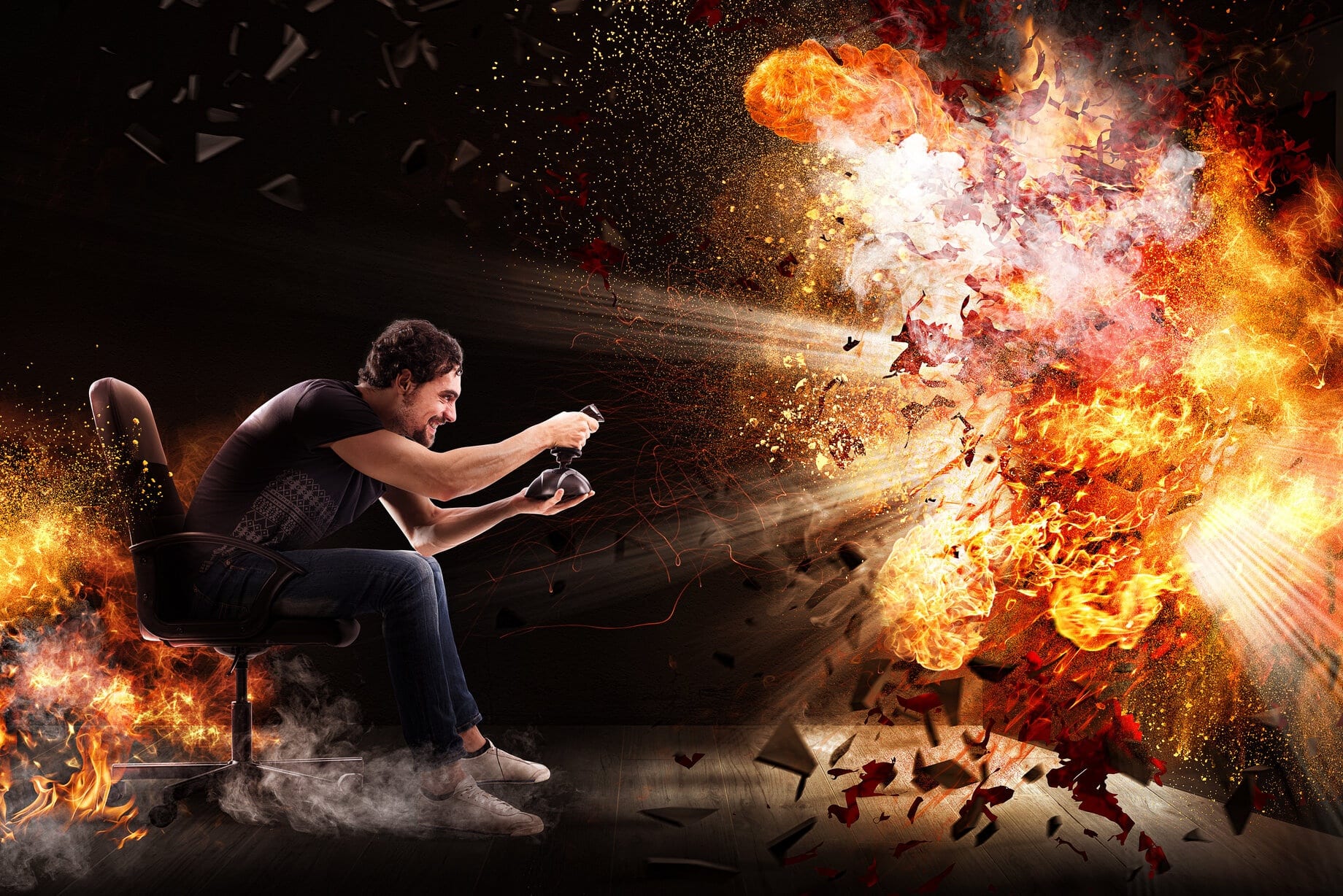

The concept of play has been evolving. Several years back, before the deluge of video games, the notion of entertainment was more outdoorsy than indoors. Kids wanted to ride their bicycles outside, play in the park, on the playground, play in their backyard, etc. The concept of play or the idea of sports and gaming was more tactile than ever. Today, the ideology of frolicking is defined by virtual reality via the defining instrument of video games and other forms of eSports. The evolution of video games has been astronomical. We have seen the metamorphosis of gaming from the Atari 64s, Commodore 64s, DOS, Nintendos, Megadrive of the 80’s to the PlayStation 5s and Xbox Series X and S of recent years. Development and advancement have been astronomical. The realism has been unreal and very phenomenal, to say the very least.
“Every age has its storytelling form, and video gaming is a huge part of our culture. You can ignore or embrace video games and imbue them with the best artistic quality. People are enthralled with video games in the same way as other people love the cinema or theatre.” ― Andy Serkis
The realism in today’s video games is next to none. You cannot compare the highly pixelated graphics of game console platforms of the 80s to the verisimilitude that we see today in the current game systems (i.e., console games) that are available. We also see games available on different platforms (e.g., Mobile, Personal Computer (PC), and Cloud games). However, with all these advancements through the years comes the question of censorship and appropriateness of content in some of these games, especially when it comes to violence. Concerning these two questions, the conversations centered on banning violent video games have been ongoing since the early ’80s. Many articles written on this issue weigh the pros and cons of the effect of violent video games on the psychology of human empathy and behavior. This conversation will, in my opinion, be like that of the wide elephant in the room.
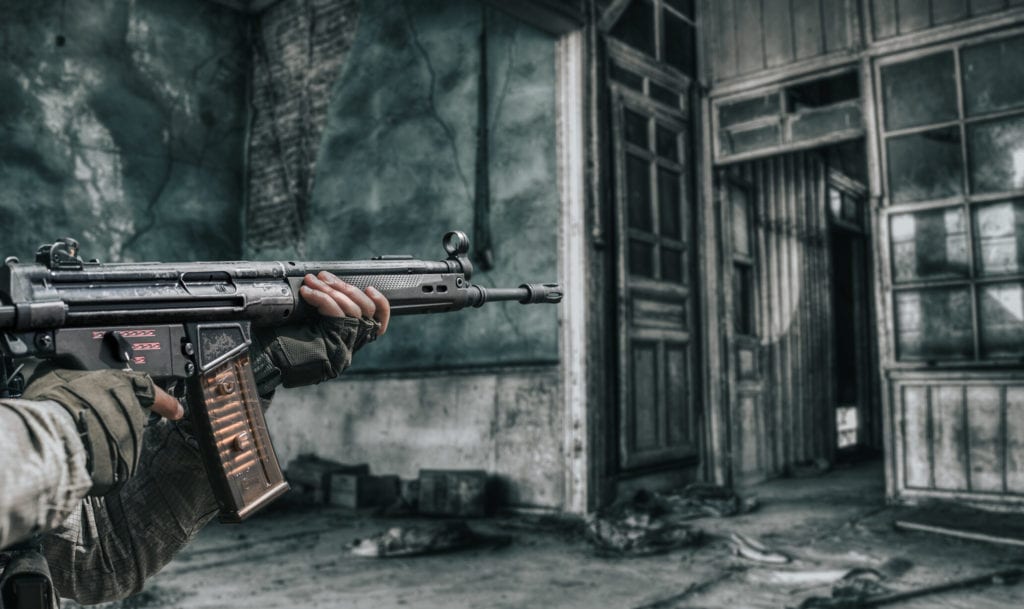

I first wrote this article in 2018. Some of the data I collected at that time is reflected in my writing. Hence, according to the data released by Newzoo Global Gaming Marketing Report for 2018, it stated then that the global game market revenue estimate in 2017 was at $121.7 Billion. However, the report for 2018 showed a marked 13.3% increase from the 2017 forecast, bringing the forecasted turnover for 2018 to $137.9 Billion.3 This report indicated that the gaming industry is a huge market! The Newzoo analysis placed the U.S. gaming revenue forecast at $32.7 Billion in 2018 with a +10.0% increase year-on-year.3 By this report, the United States stands as the second-largest video game market next to the People’s Republic of China (PRC). China is currently at $37.9 Billion―it is pretty fascinating to see that the PRC is a vast video game consumer. By this data, the global game market is experiencing an exponential growth ratio from being a small market segment in 2012 to a formidable industry in 2018.
Fast forward to 2020, and I still look to Newzoo as my source for gaming data, analyzing the latest trends and numbers in this sphere. Newzoo has a comprehensive 2020 Global Games Market Report. It goes in-depth in analyzing key trends, market sizing & forecasts special focus topics and rankings―an interesting read, to say the very least. However, analyzing the whole document would be a complete digression from my focus on this article. However, I will still go ahead to mention some facts from the record. Later, I will take the time and liberty to do a complete review of their dossier. The final global game revenue forecast for 2018 and 2019 was $138.5 billion and $145.7 billion, respectively.1 It is projected that “the world’s 2.7 billion gamers will spend $159.3 billion.” Newzoo forecasts that the games market will upend from 2018 with a +7.7% CAGR to cross the $200-billion mark by the end of 2023, reaching a mindboggling $200.8 billion.1 As you can see from the trends, the gaming industry is on a fast-track path towards growth and aggrandizement.


As we look at the revenue that the gaming industry is raking in from the Newzoo Report’s research, this industry doesn’t seem to be stopping its growth anytime soon. It then makes sense to say that the argument over the influence of violent video games, if it should be banned, is nothing but a white whale! This assertion means that the conversation looks very promising, especially during research and conferences et al. However, the question is this, will violent video games ever be banned? Some psychologists believe that violent video games negatively influence behavior, while others think it does not. However, it seems like psychologists could be having this argument for a very long time to come in the foreseeable future. I do not think those whose wealth comes from this industry can lie down quietly at night and watch their livelihood destroyed by assertions, researches, and potential arguments. Everyone is up for a fight in the video game industry. So, the debate will go on for a while, as it seems. Thus, the question that arises is, “Do we censor or not censor violent games?”
Censorship or Not? Thoughts


For the sake of argument, let’s discuss a few points to note for parents who would rather censor the video games’ content in their homes. Metacritic, a gaming review website, reveals that the top-selling video games like Grand Theft Auto, The Last of Us, God of War Uncharted, etc., are made up of violent content. It seems like the higher the level of violence, gore, and death-infused scenarios the game has, the more returns the new game might have once released to the market. Does this depict the mindset of our current generation? Is this the generation that is now defined with so much harshness, cruelty, brutality, and violence? It’s left to us to ponder on these things. In our world today, where mass school shootings, bullying, and all forms of addiction and violence towards women are rampant, some critics argue that these violent video games are part of these issues’ blame. Advocates of censoring violence in video games will gladly embrace the notion that violent video games are partly responsible for making violence more appealing today.
However, despite some clamor for censorship of violent content in video games and whether minors should have access to it or not, there are a few schools of thought at play on this issue. Recent research published on the website Science Daily on January 16, 2018, by the University of York claims that “…researchers have found no evidence to support the theory that video games make players more violent.” After surveying 3000 participants, the conclusion drawn from this article that video game concepts do not ‘prime’ players to behave in particular ways. This study posits that violence in video games does not necessarily increase players’ aggression in real life. (NB. Priming is the exposure of concepts (e.g., violence) that makes it easier to use in “real life”).2 This proposition debunks the foundation that clamors for the ban of violent video games.
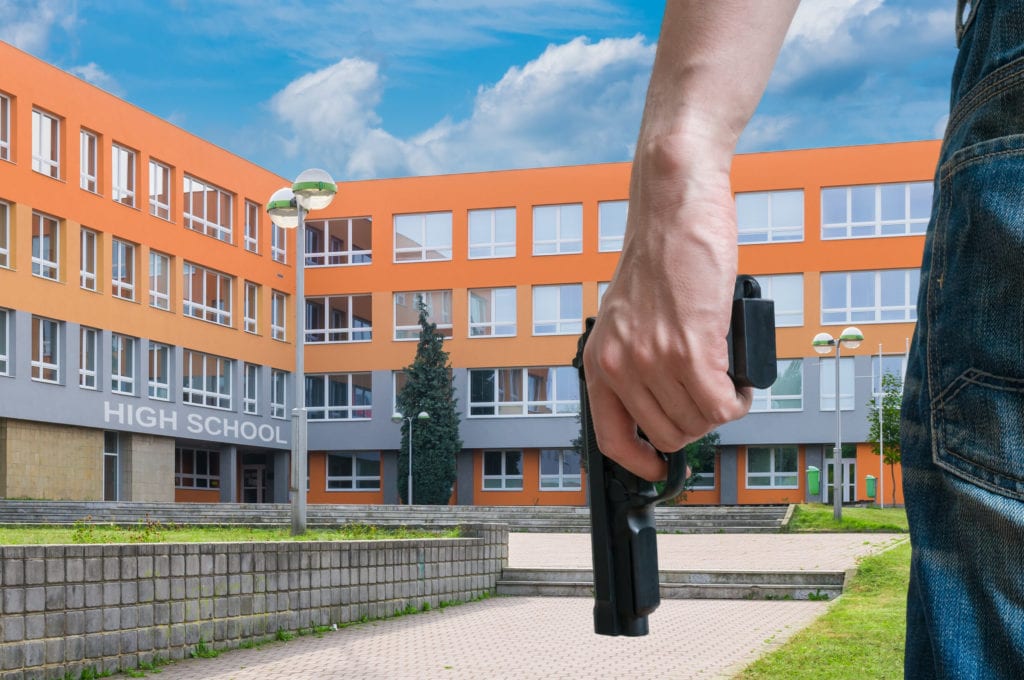

On the other hand, some critics believe that those who develop these games promote violence and embed some neurotic waves that trigger players’ violent tendencies, especially with the recent spate of school shootings witnessed in the United States. Since the Columbine High School (CHS) shooting in Columbine, Colorado, United States, “25 fatal, active school shootings at elementary and high schools in America” have occurred since that event on April 20, 1999. This recklessness by the gunmen, Eric Harris and Dylan Klebold, has sparked a societal protest that violent video games contribute to youth violence and should be banned. This follows similar calls made by the Florida Lawmaker, Jared Moskowitz, after the Florida High School Valentine’s Day shooting early this year.
On the confronting end of the spectrum, video game producers will plead their right to the 1st Amendment of the United States Constitution that they have their right to free speech as enjoyed by other art forms. The Brown vs. EMA was a ruling by the United States Judiciary protecting free speech for the video game producers and the consumers. The fact remains that some of these shooters played video games and may have been primed by the content of the games that they played to exhibit the heinous acts that they perpetrated. However, the question arises concerning millions of other kids and even adults who also play these seemingly violent games but don’t manifest any violent tendencies. Should they be punished for the atrocious acts of the few? Brown vs. EMA also considers that a lot of work still needs to go into the complete understanding of the effect(s) and impact(s) of video game science. Both sides of the spectrum make valid points to state their case. Hence, is there really a role that violent video games play in youth violence?
The Role of Violent Video Games in Youth Violence
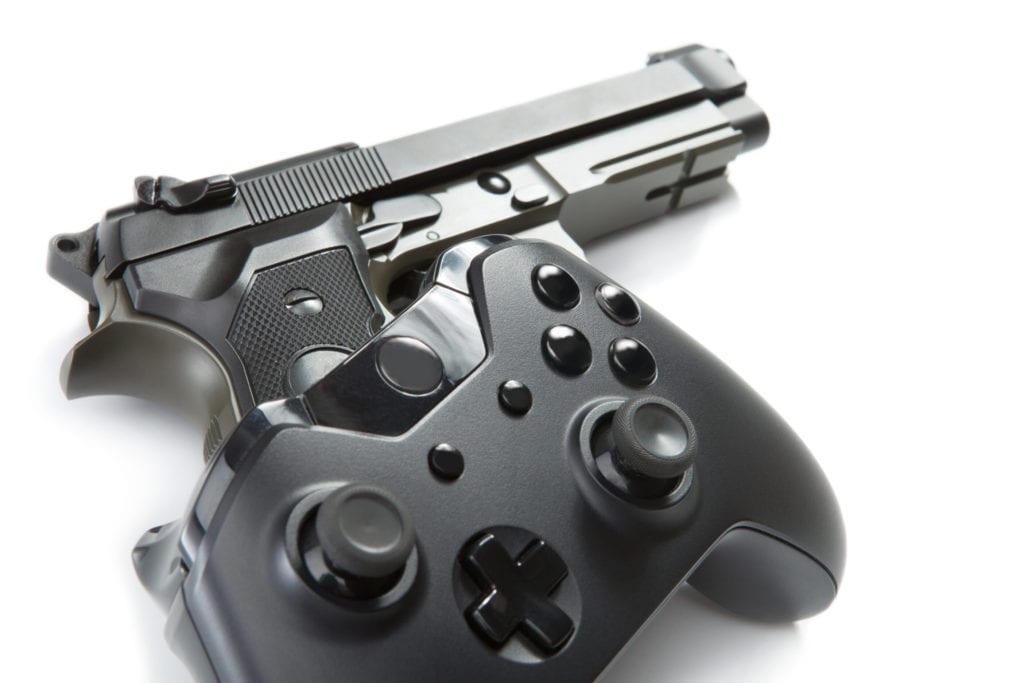

However, let’s ask again. What role do violent video games play in contributing to youth violence?
Yes, there have been cases that stated that perpetrators of mass shootings played violent video games. However, as stipulated above in the preceding paragraph, millions of youths play video games full of gunfire, hand combat, wrestling, martial arts, mixed martial arts, etc. However, does that have any relationship between committing the dastard deed of cold-blooded murder and playing recreational entertainment? What percentage have re-enacted what they watched beyond shooting friends with imaginary guns or water guns in their mother’s backyard? Do we justify the action of complete censorship of violent video games because of a few miscreants’ activities? A full ban would infringe on the 1st Amendment rights of those that maintain their sanity amongst other video game players. Also, the artistic rights in conjunction with the video game producers’ 1st Amendment rights would likewise be infringed upon.
Several types of research have shown that only a tiny fraction of the consumers become violent. The United States (US) Secret Service and the US Department of Education reported that 88% of the perpetrators were interested in violent movies and books. In comparison, only 12% showed interest in violent video games. (NB. This information is contained in the Safe School Initiative: Implications for the Prevention of School Attacks in the United States. This report is an effort to ensure student safety in schools). The release also did not find a substantial correlation between playing violent video games and school shootings when reviewing the portion about “Characterizing the Attacker.” Neither did it determine that playing violent video games harmed youths. Hence, it would be a generalist point of view to conclude that playing violent video games eventually causes all players to commit mass shootings. It is a nightmare to even think about these miscreants’ pain level on a side note. Our primary goal is to see our kids protected in their schools and everywhere else.


Some studies allegedly found that violent video games that cause people to become desensitized to human empathy and violence are more likely to spur individuals to commit a violent act. We can assert that this comment may not hold 100% validity from our previous assertions in the article. Not everyone who plays video games, even the violent ones, play with the intent and mindset to commit a crime. Both adults and children who play video games do so because it helps them relax and escape into a make-believe virtual world (i.e., escapism). Children also resort to video games as an outlet to experience fantasies of power, to explore and master what they perceive as exciting, and in environments, they have control over. Adults also play video games as an outlet to relieve stress. Researchers also point to the reasoning that video games’ purgative effect is a possible reason why there might be a reduction in crime rates. This assertion could be because children spend most of their time playing games in their make-believe world instead of committing violent acts in the real world.
Violent video games reinforce fighting as a means of dealing with conflict by rewarding intense action with increased lifespan, weaponry, moving on to higher levels, etc. This might be what primes individuals to commit violent acts in the first place. Violent games allow youths to experiment and educate their minds concerning moral issues such as war, violence, and death without real-world consequences. Moral lessons are learned here. War-themed video games like Call of Duty WW2, Battlefield 1, Call of Duty: Black Ops III, Metro Exodus, Steel Division: Normandy 44, Enemy Front, etc. require players to take the roles of soldiers from different sides of a conflict, making players more aware of the war strategies and its consequences. Some of these games could also motivate young people in a positive light. For instance, some people elect to join some military branch to serve their nation in real life because of playing some war-themed video games. This is usually a one-off occurrence most times.
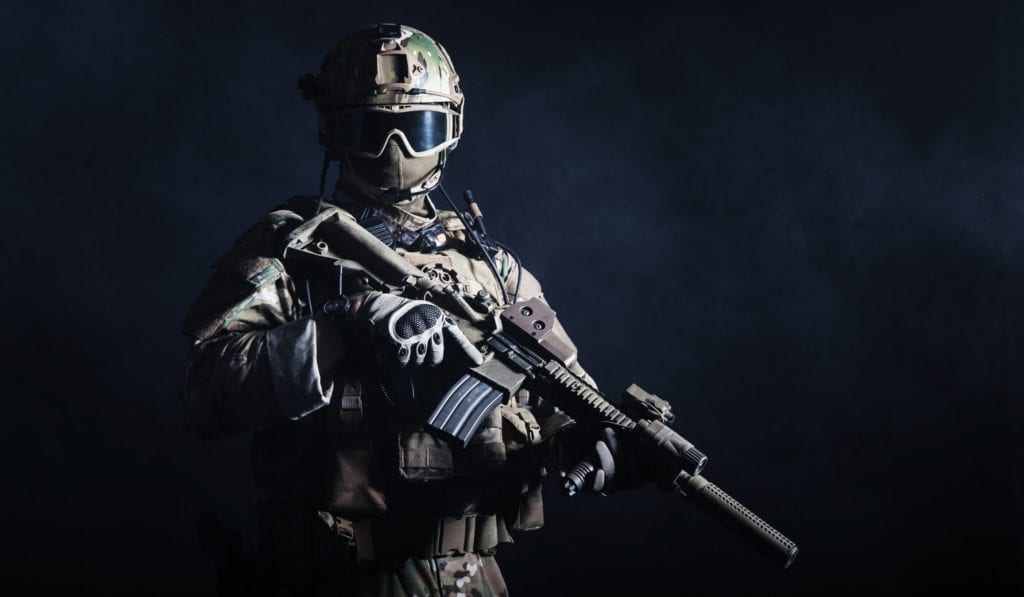

Some researchers have tried to link the feeling of guilt that leads to increased civic engagement and decisive actions that benefit others in the real world to playing violent video games. I am not sure about this, possibly due to the team-oriented multiplayer options in many of these games. However, it is arguable that children are more likely to imitate the behaviors of characters in video games and have difficulty distinguishing reality from fantasy. By age seven, children can recognize illusion from actuality and tell the difference between a video game and real-life violence. Some Video game players might have a clear understanding that they are playing only a game. The difference between the effect of a video game and reading a how-to-book on murder is that video game players know the difference between fact and fiction. This ability prevents them from emulating video game violence in real life. As a result, most children mostly behave appropriately in the real world for the most part.
These studies purporting a link between video game violence and real-life violence are flawed because they fail to consider other factors that contribute to children becoming violent, such as how-to-books, family history, peer pressure, and mental health. Most studies do not follow children over long periods (i.e., a prolonged longitudinal analysis) to have more robust research data representing how and if video games influence real-life behavior. In other words, doctoral students of psychology or established psychologists need to conduct more longitudinal studies to help them ascertain the changes that occur in the lives of their variables (i.e., people) after a protracted period. In 2011, the United States Supreme Court also ruled that states cannot ban the sale or rental of ultraviolent video games to minors. These arguments are flawed because many children’s cartoons also have the same level of violence in them, if not more, when compared to these games. Hence, this very fact negates the reason for the proposed ban that did not pass. So, suppose violent video games negatively influence children and adult players; most of the cartoons that children watch and adult movies do the same thing. These could also be classified as also having a similar negative influence, if not more, on the children and adults that watch them too. If one form of artwork is banned, then all other artwork forms should also be prohibited.


The protagonists calling to ban violent video games might be of the older generation who have no understanding of video games and had no experience playing them. They would unfairly disdain video games believing that these games contribute to laziness and crime. The exaggerated public concern, fear, and anxiety over violent video games might continue to threaten the global game market. However, these concerns have multiplied the overall interest in video games, thereby contributing to the revenue growth that we see in the game market. The video game market is on an upwards trajectory. According to the Newzoo Global Gaming Marketing Report for 2018, the Global Games Market is going to be a $180.1 Billion market in 2021.3 As previously mentioned; the market will surpass $200 Billion by 2023.1 Concerned parents can actively monitor what video games their children are playing and see to it that they play games meant for their age group. Also, parents who are bothered about video games’ effects should limit the amount of time their children play on the mobile, PC, or console versions. Parents should not disregard other causes of violence like music, books, television, drugs, and even family friends whose children might influence their wards.
I don’t think banning violent and ultraviolent video games can solve the issue of violence in society. As we have seen in the preceding paragraph, there are so many other factors contributing to violence in the community. I would suggest that the content can be regulated and not allowed to run riot just like movies. The goriest video games must be censored for adults only and only bought or rented under strict regulations. This will serve the industry better, rather than pushing for complete censorship of violent video games. Ergo, there is no infringement of the 1st Amendment rights of the producers of the games and the consumers. The game producers can also incorporate positive cues into the games, encouraging players not to try what they are playing at home. This will serve as a reminder to players. The government also has the right to require a “violent label warning” on violent and ultraviolent games, just as we have the Surgeon General Warning on Cigarette packs about the dangers of smoking. The same can go for violent video games―it could be called the Game General Warning. It could read, “Violent Video Games Can Cause Minors and Adults to Become Primed for Violent Behaviors If Not Cautious. You Can Become Desensitized to Human Emotions. Play with Care. Not for Minors.”


If we want to go overboard with the whole deal of establishing some regulation, we can set some paper trail from the purchase of violent and ultraviolent video games. For instance, just like gun purchase, there should be a paper trail for acquisition, especially for customers whose taste run to the deadliest games. However, what will we say to those that state, “Hey! I like to watch action movies, and intense thriller flicks at times, horror films occasionally, and crime and investigation channel from time to time―this doesn’t mean that I am prone towards murder or violence.” By the way, I have played God of War some years back; however, I am not desensitized to human empathy. I believe that it is a thing of the mind―especially for the mature soul who can coordinate their emotions and govern their sensibilities and behavioral tendencies.
Folks, not everyone who plays the games turns out a menace to society. Therefore, giving much attention to the overstated argument that violent video games contribute to youth violence and the protest to ban these games is neither here nor there. There have been instances like we have seen that violent video games have primed some youths into violence. However, the actions of a few miscreants who inflict harm to others should not rob game producing companies and consumers of their 1st Amendment right of free speech and expression. These people’s activities are not tolerated and should never be taken lightly, to say the very least. If we censor violent video games, we should be ready to control all media forms that promote violence.
In the light of regulations, the government can make it a requirement for video game companies to put warning labels on violent games so that buyers are aware. As a form of establishing social-good credibility, video game companies can also include fierce highlights and warnings inside their games of things that players should never try at home. We also need more longitudinal research to see the prolonged impact of violent and ultraviolent video games on people. This will help the video game industry and society of video game players understand the impact of the games they make and play respectively. Like we have seen, the video game industry is on an upward trajectory of growth and profitability. New innovations are redefining the concept of video gaming (e.g., virtual reality gaming, cloud gaming, mobile gaming, etc.). Who knows, we could see Artificial Intelligence (A.I.) Reality Gaming in the future. A future where we incorporate robots in vivid life-game scenarios.


The gaming experience is a fun world of fantasy that translates us into heights of euphoria. We see new levels of realities and technology-infused gaming platforms and experience gaming dominance with every passing day. We enjoy the feeling that we get when we sit down solo or with friends to play our favorite games. The exhilaration is electric. Playing our favorite games helps us in relieving stressful conditions in our lives. The gaming evolution is not slowing down too. We have seen how games have evolved from the early days of gaming in the ’80s. The realism that we see today in gaming is nothing but stellar and mind-blowing. As earlier mentioned, the future of gaming will even get better as technology continues to evolve. Who knows what the future would like several years down the road from now? Only time will tell.
Finally, in every industry, concerns arise. Today, the attention we have seen about the gaming industry focused on the debate regarding censorship or no censorship of violent and ultraviolent video games. Like I earlier said, several decades from now might still find us propagating this argument while the game market mops up profit like water to a sponge. Hence, should violent video games be banned? From the facts that we have seen, we do not have enough evidence to back this notion. We may not be able to institute a complete ban without having to infringe on people’s 1st Amendment rights. So, this question is still up in the air and will remain open for more debate. However, we have explored the facts, and a ban might not come to fruition anytime soon.
“This generation is so dead. You ask a kid, ‘What are you doing this Saturday?’ And they’ll be playing video games or watching cable, instead of building model cars or airplanes or doing something creative. Kids today never say, ‘Man, I’m really into remote-controlled steamboats.” ― Jack White
Video gaming has impacted our culture. Kids and some adults are very much drawn to video gaming. We must tow the paths of caution regarding the kind of games played, especially ultraviolent games. However, we must always remember that “We become our preoccupation.” We become our habit. We become what preoccupies our every passing moment. Whatever we infuse becomes what we diffuse in some way or form. Because of this, let us moderate ourselves. Moderation is the heartbeat of all sanity. Moderation is the force that will keep us grounded in equilibrium. Let us watch what we make become habits as it affects what we become. So, as we play video games―non-violent, violent, ultraviolent―let us do all things moderately. All things may be ascribed as needful. However, not all things are necessarily expedient.
References
- Newzoo. (2020). Newzoo global games market report 2020. Retrieved from https://newzoo.com/insights/trend-reports/newzoo-global-games-market-report-2020-light-version/
- University of York. (2018, January 16). No evidence to support link between violent video games and behavior. ScienceDaily. Retrieved from www.sciencedaily.com/releases/2018/01/180116131317.htm
- Wijman, T. (2018, April 30). Mobile revenues account for more than 50% of the global games market as it reaches $137.9 billion in 2018. Retrieved from https://newzoo.com/insights/articles/global-games-market-reaches-137-9-billion-in-2018-mobile-games-take-half/
Sports
10 Reasons Why Sports Should Be a Requirement in Schools
Recently, a debate has arisen on the importance of sports or physical education in various levels of schools—elementary, middle, high schools, and beyond. Some stand for it and some don’t. Do you?


Recently, a debate has arisen on the importance of sports or physical education in various levels of schools—elementary, middle, high schools, and beyond. For some, the argument is that any form of sporting activity is unnecessary. They argue that it is tasking on the kids and a whole berth away from algebra and science. Others say it distracts the kids from their studies and gives them the illusion that they have an alternative to poor grades if they excel at sports. On the other side of the fence, some agree that athletics is good for the child—physically and mentally. This listicle tends to lean more to the latter than the former.
“Sports teaches you character, it teaches you to play by the rules, it teaches you to know what it feels like to win and lose—it teaches you about life.” — Billie Jean King
From time immemorial, sporting activities in schools have served as an outlet for students to release pent-up energy by helping to shape their bodies and minds. In this instance, all work and no play will make Jack and Jill a dull boy and girl respectively. There needs to be some harmonious equilibrium between academics and staying physically fit and healthy. Due to its enormous benefits, sports or physical education is an essential requirement in a school’s curriculum. Perhaps, if individuals can understand the following benefits of these in-school-games, it would help create an understanding of why sporting activities should be an integral part of the modern educational system. Having said all that, what are the benefits of sports?
#1. Research Supports Sports in Schools


Statistics show that most of the students who participate in sports fare better than those who don’t. This assertion stems from the fact that like other forms of exercise, engaging in any sports sharpens the mind and keeps the body fit—a healthy heart, a healthy brain. Sports require sharp mental abilities that help individuals turn out to be disciplined children.
#2. Sports Enhances the Focus Factor in Kids


As a parent, it is natural to be worried about your child being distracted. Thereby, engaging them in extracurricular sports activities such as soccer, basketball, baseball, football, track, to mention but a few—will help maintain their concentration and focus. This activity will not only contain their energy—it will also channel it to positive endeavors and keep them out of trouble.
#3. Sports Helps Students with Learning Difficulties


The prevalent notion is that when a student is having difficulty in his or her studies, most times, it has nothing to do with sports. On the contrary, sports or physical education has helped students with learning difficulties have a focal point in their lives. Sports has served as an anchor, and for some, the fact that they excel at sports gives them a reason to believe that learning is also a hurdle they can surmount.
#4. Sports Is Necessary for Holistic Education


According to the popular saying, “All work and no play makes Jack a dull boy!” Physical education is essential for students to experience an all-round education—a holistic or complete education. Learning is not limited to all that is being taught in the classroom. Sports and other educational programs and activities should be encouraged for the emotional and physical training they bring to the child.
#5. Great Athletes Start Early (G.A.S.E)


School sports and physical education help children develop potentials which they may further develop professionally. Most of the great sportsmen and women we see today started from a tender age, and early training helped shape them into the great athletes they are today—Great Athletes Start Early (G.A.S.E).
“The game of basketball has been everything to me. My place of refuge, a place I’ve always gone where I needed comfort and peace. It’s been the site of intense pain and the most intense feelings of joy and satisfaction. It’s a relationship that has evolved over time, given me the greatest respect and love for the game.” — Michael Jordan
#6. Sports Can Help Students Get Good Grades


Some schools have a policy that if you flunk your grades, you stand no chance of engaging in sports. Students who plan to go pro are advised to keep a specific Grade Point Average (GPA) yearly to be allowed to continue participating in sports. Student-athletes are forced to maintain good grades to meet the standards of their favorite game of choice. This policy serves as a motivating factor to focus on their studies as a fair trade to participate in sports.
#7. Fit Body = Healthy Mind
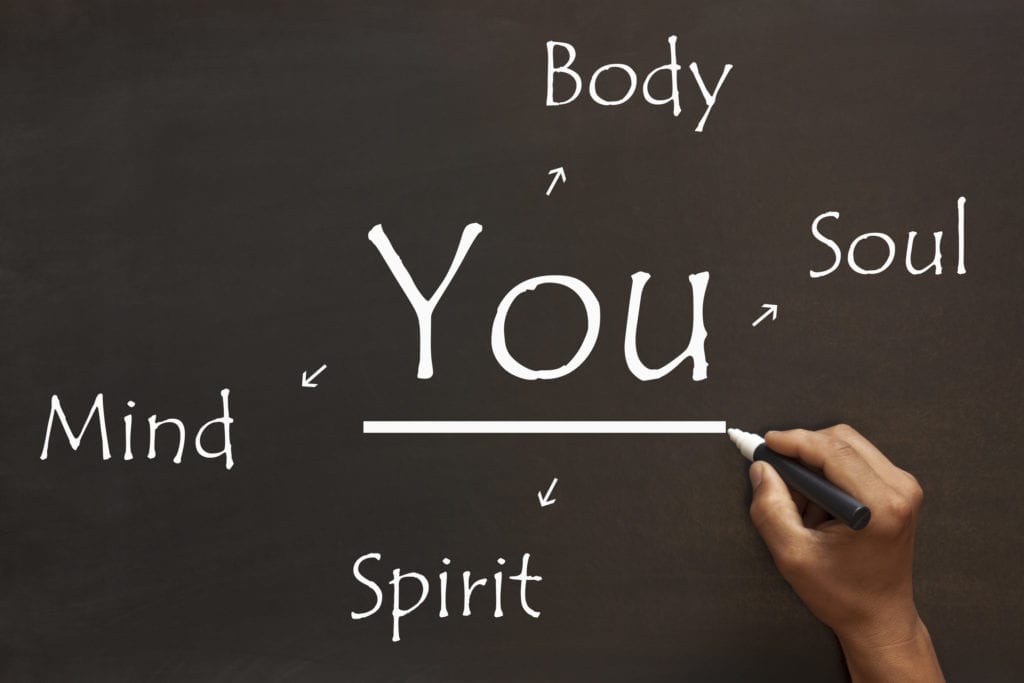

Physical Education helps keep the children fit and teaches them good habits that they can imbibe from an early age. Although some may argue that children do not need fitness in these beginning stages of life; however, it is never too late to start. Exercise generally gives individuals a sound mind and a healthy body.
#8. Sports Cultivates A Sense of Community


What better way can a student fly the flag of the community by representing the school in community-based sports. From this early stage, students in elementary, middle, and high school begin learning to cultivate the spirit of sportsmanship, team spirit, healthy competition, and community representation.
#9. Sports Can Help Build Social Bonds


It is always a nice idea to encourage the spirit of leadership and social skills. High school students who participate in sporting activities use such avenues to build solid friendships and engage in social activities. For children who are painfully shy, this is a great way to mingle and interact with like minds.
#10. Lifestyle Skills


Physical education involves learning new skills necessary for the development of a child. These skills may come in handy as he or she grows. These skills include time management, learning defense mechanisms to protect themselves from attackers and so on.
We have seen the ten reasons why sports should be a requirement in schools. First, statistical research supports the fact that games can be fun and beneficial in schools. It bolsters mental alertness in kids and adults alike. Second, sports help to enhance the focus factor in participants. Third, sports could also help students with learning difficulties. If they succeed in a sport, it could give them a jolt of confidence towards wanting to do better in their academics. Fourth, sports can be a great contributor towards a holistic and balanced education. Fifth, starting sports earlier on can help develop sports prodigies later in life.


“Sports teaches you to understand the meaning of a team. You need to be able to work with everybody; you don’t have to be their best friend. You can experience the fun of competition and driving toward a common goal without pushing to bond in some major way with each individual on a project.” — Kathleen Kennedy
Sixth, participation in sports could be a fabulous catalyst for students who wish to continue in sports in school. We see this a lot in high schools and colleges. Seventh, a fit body, in many occasions, is equal to a healthy mind. Eighth, sports can help cultivate the spirit of sportsmanship, team spirit, healthy competition, and community representation. Ninth, in-school-games is a great way that allows kids, teenagers or adults alike to build lasting social bonds and friendships. Tenth, sports can help in the development of lifestyle skills that would prove beneficial later in life (e.g., self-defense).
Although that this listicle may not be exhaustive and there could be other reasons why sports should be a requirement in schools, we have itemized various reasons that can help us form an opinion on why sports should be a requirement in schools. The benefits can only make kids, teenagers, and adults more rounded human beings. Hence, there is a need to promote sports and various forms of physical education in our educational system. The goal is to attain a more holistic pattern of scholarship that the body, mind, soul, and spirit benefits. You will do your children a whole world of good when you let them engage in sports!
Sports
20 Countries of the World and their National Pastimes
There are hundreds of countries around the globe. One of the cultural identifiers of nations around the world is their national pastime or sport. It is what keeps the country entertained. In times of global tournaments, it unites the nation in solidarity.


There are hundreds of countries around the globe. One of the cultural identifiers of nations around the world is their national pastime or sport. It is what keeps the country entertained. In times of global tournaments, it unites the nation in solidarity. In this listicle, we will look at the national pastime of 20 countries around the world. In future listicles, we will consider more national pastimes that are not mentioned in this list. Let’s dive right into it:
#1. Afghanistan (Buzkashi)
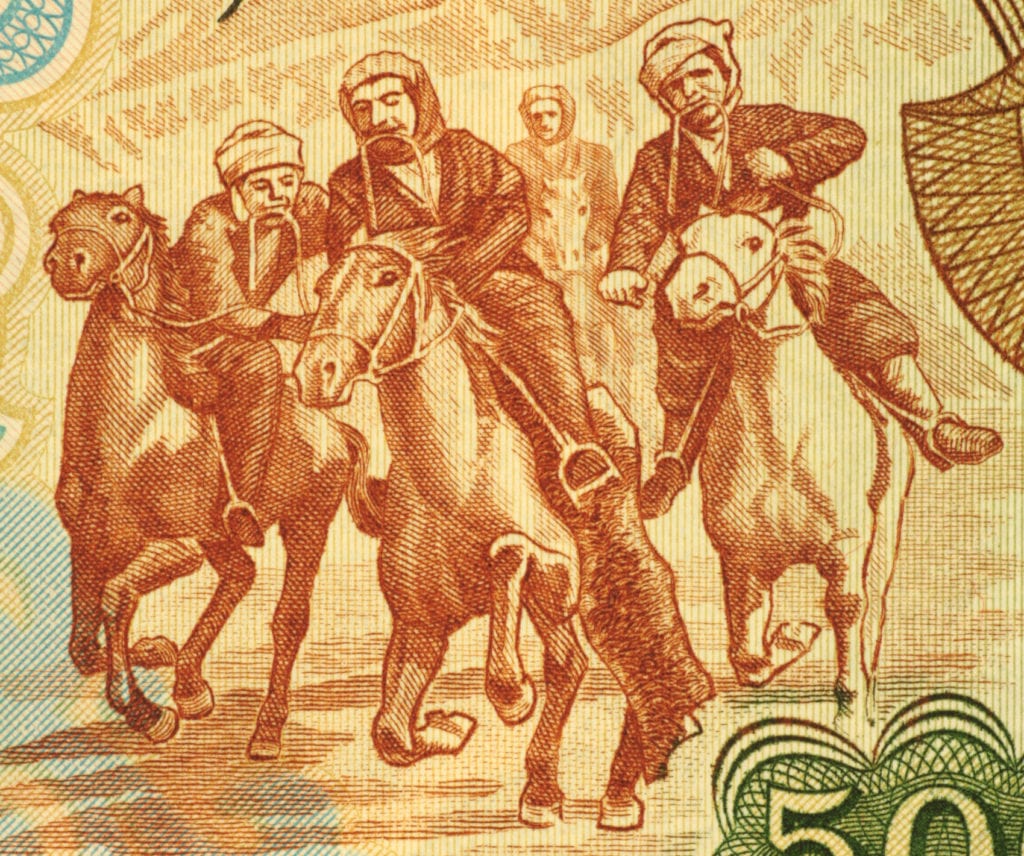

Buzkashi is the national pastime of the country of Afghanistan. It is performed by mounted horsemen in opposing teams who are striving for the possession of a calf or goat carcass. The aim is to place the animal remains in a specific goal drawn on the field. It is a highly aggressive sport and originated among the nomadic tribes of Central Asia.
#2. Argentina (Pato)
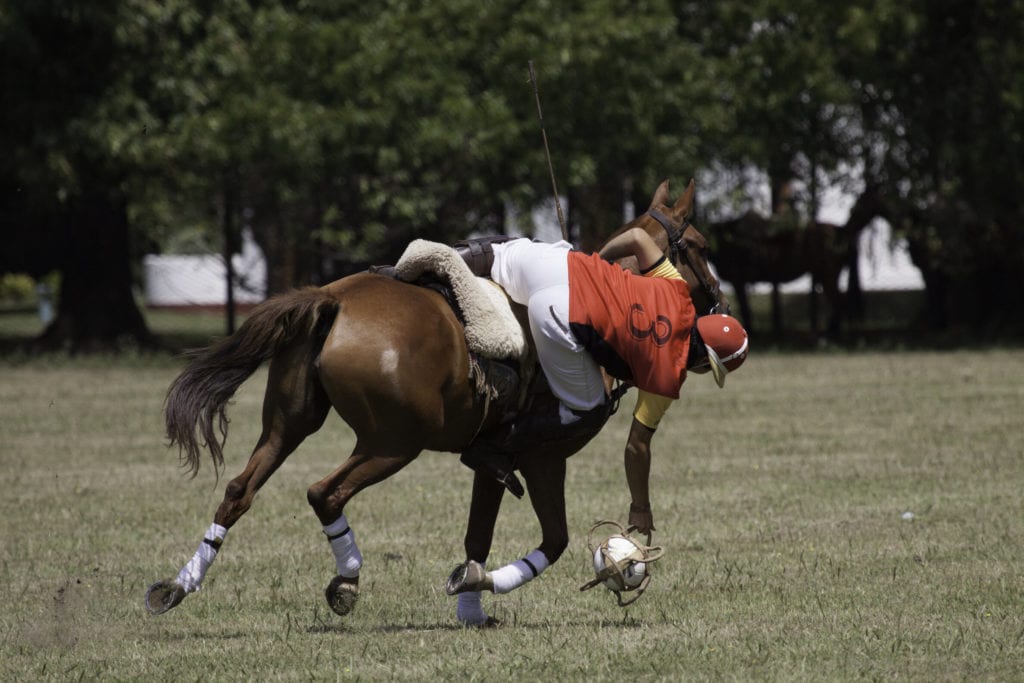

Pato is a fusion of Basketball and Polo, involving two teams four on horseback, attempting to put a ball through a vertically inclined hoop hanging from a 9-feet (2.7 meters) high pole. Pato was initially played with a live duck; however, a ball is now used in the sport (NB. The ball has six large leather handles, as seen in the picture above). The game involves two teams four on horseback, each required to score the highest number of goals before the game duration elapses.
#3. Australia (Cricket)
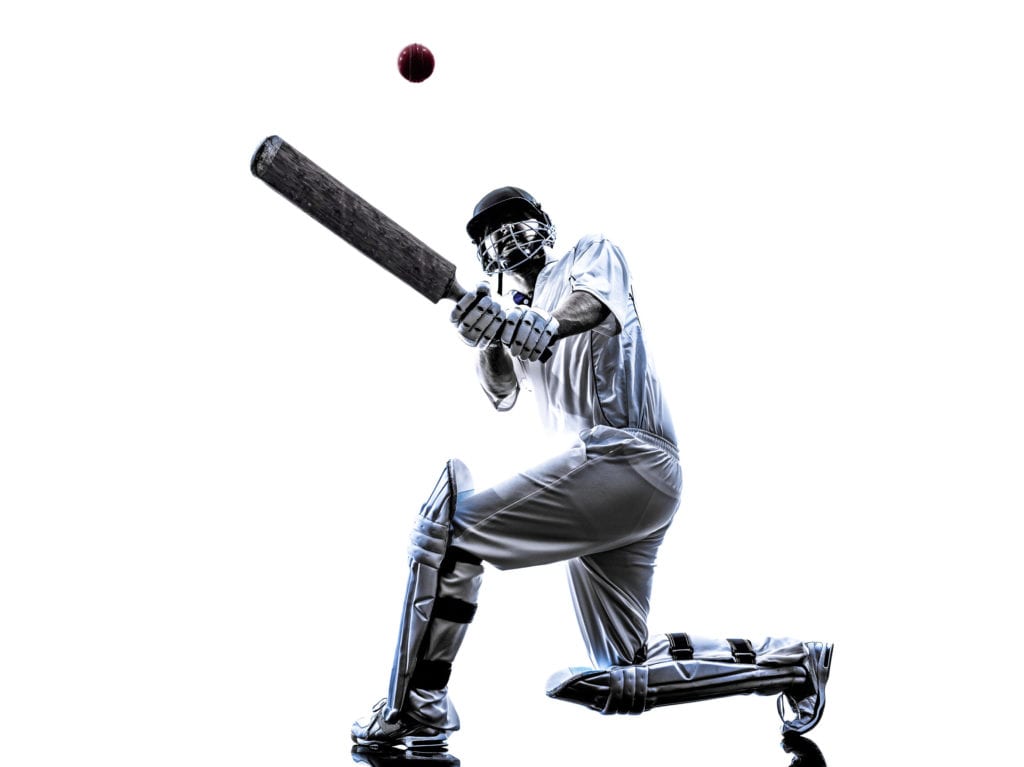

In Australia, Cricket is widely played and is considered as the National Sport of the Island Country Down Under. The game of Cricket is played by two teams of 11 members each that is performed on a course having two wickets 22 yards (20 meters) apart.
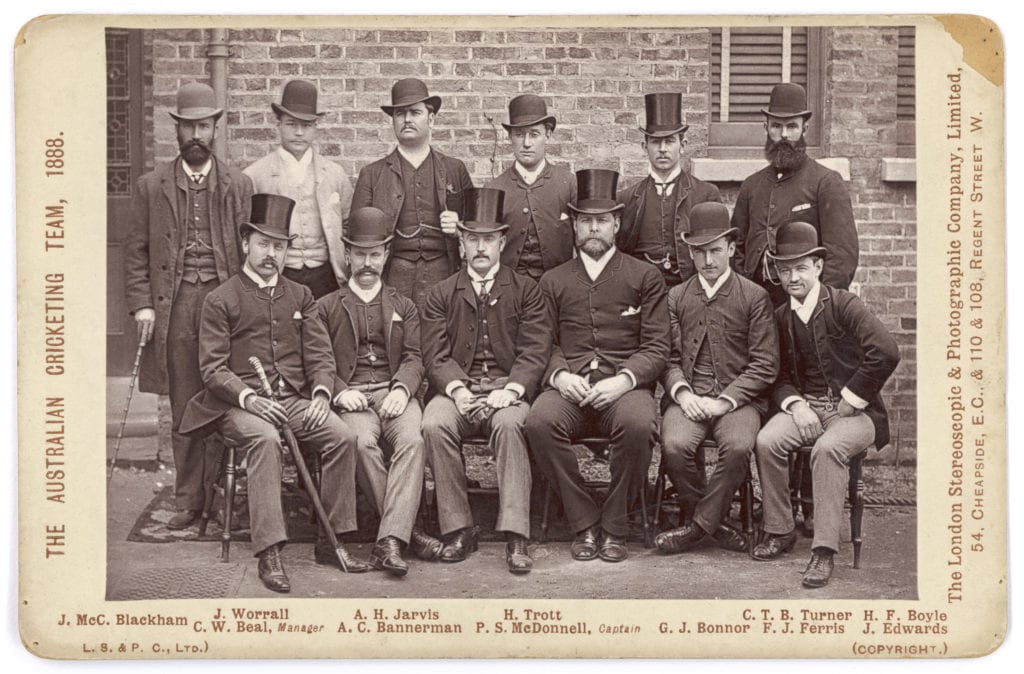

The dictionary does some justice in explaining the objective of the game. The aim is to score the highest runs, within a specific number of overs, by striking the ball as far as possible, so that one is enabled to swap wickets with the batsman defending the opposite wicket before the ball is recovered.
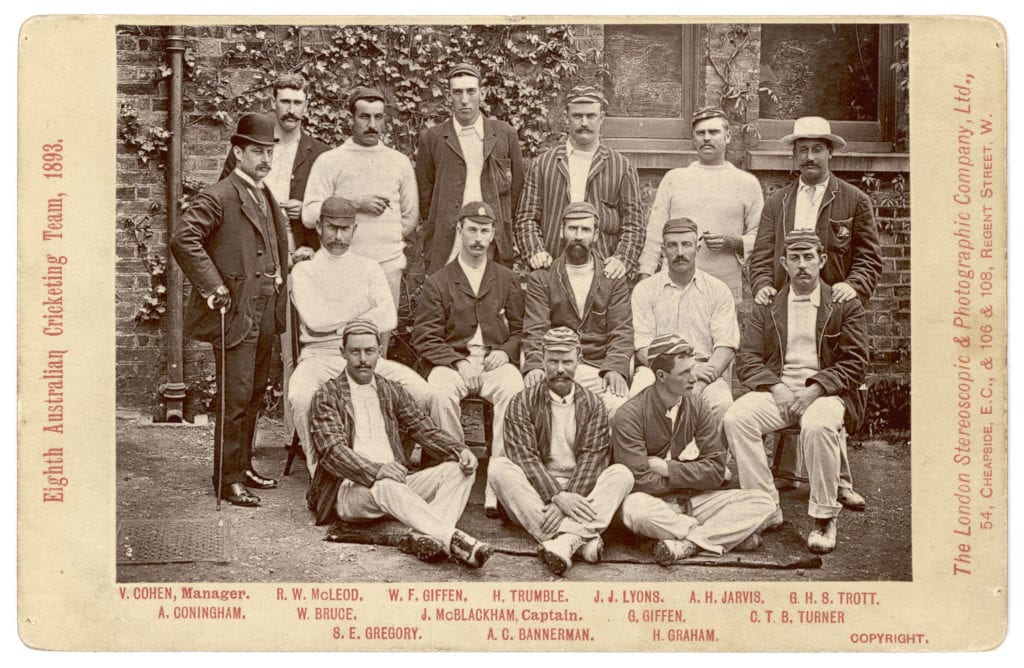

The game of cricket is growing in leaps and bounds in the Country Down Under. The Australian Census reveals a record-shattering 9% increase from the previous year in the number of those that are actively engaged in cricket competitions or programs—an astonishing 1,558,821 Australians participate in the sport. This further solidifies its hold as the favorite national pastime of Australia.
#4. Brazil (Capoeira)
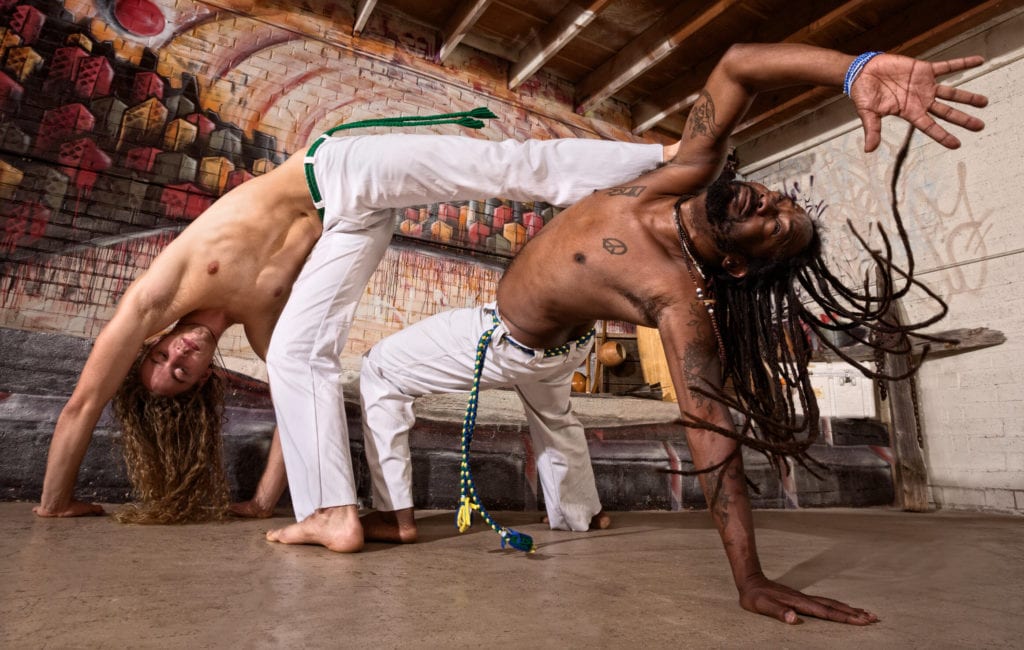

This sport is a form of martial arts which is a fusion of various elements of acrobatics, dance, and music. Capoeira was a prohibited dance among the blacks during the slave trade era in Brazil. The dance has survived into the 21st century, becoming one of the most recognizable symbols of Brazilian culture.
#5. Canada (Ice Hockey and Lacrosse)
Depending on the season, Ice Hockey and Lacrosse are the national and most popular pastimes in the nation of Canada.


The Canadian Winter Sport is Ice Hockey, and as the name implies, is played on ice between two teams of six skaters each. The goal is to score goals or points by hitting a puck into the opposing teams’ cage using a stick with a wooden blade fixed at an obtuse angle to the shaft.


The Canadian Summer Sport is Lacrosse, which is played on grass. The game was originated by Indians of North America. In the game, two teams made up of 10 members tries to send a small ball into each other’s netted goal. Each of the players in the two opposing sides is equipped with a Crosse or stick which has a netted pocket for catching, carrying, or throwing the ball.
#6. Chile (Chilean Rodeo)
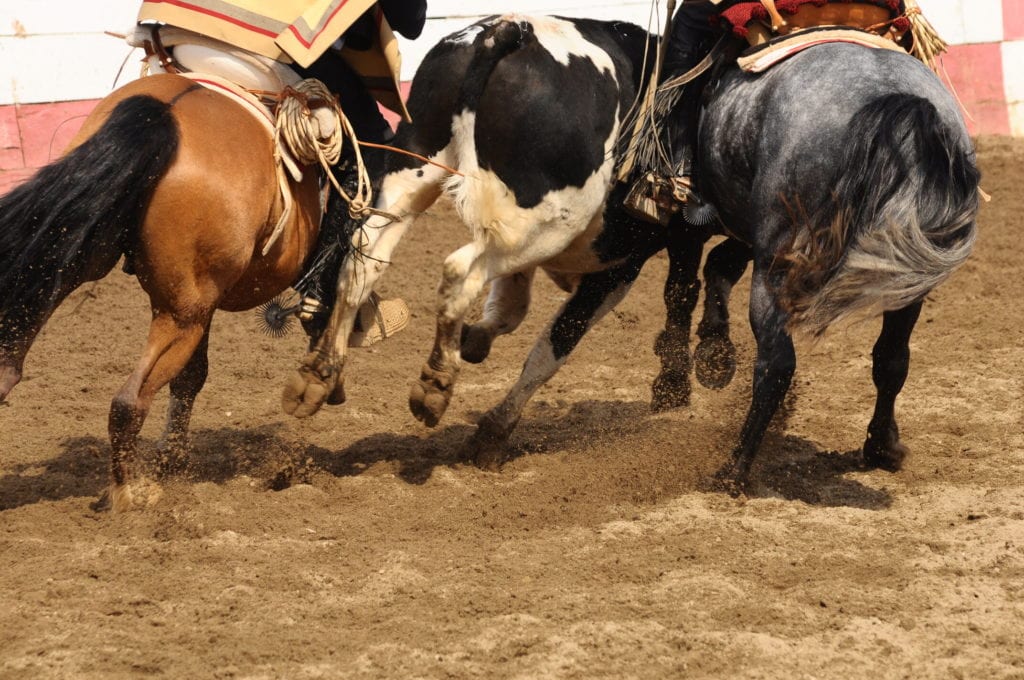

In the Chilean Rodeo, two riders, which are called Huasos, on horses are expected to ride laps around an arena to stop a calf by pinning it against large cushions. The riders score points when the steer is driven successfully around the corral (i.e., called medialuna).
#7. Dominican Republic (Baseball)


In the Dominican Republic, baseball is the common sport and considered the official game and widely known as Pelota. Many baseball players from this country have ended up playing in the American Major League Baseball (MLB) league.
#8. Finland (Pesäpallo)
Source: YouTube/Ninh Ly
Often regarded as Finnish baseball, this sport involves a bat and a ball. The game is very similar to baseball, brännboll, and lapta. However, in Pesäpallo, the ball is pitched vertically and with less power than in baseball. The batting team has 12 players while the defending team has 9.
#9. Grenada (Cricket)
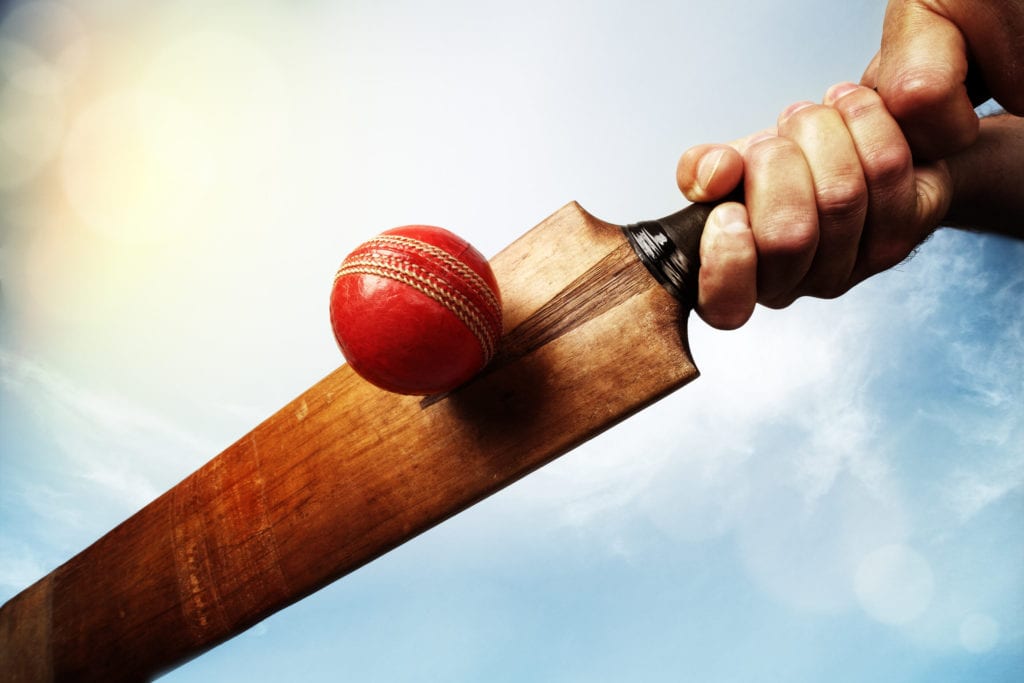

In Grenada, Cricket is considered the official sport and is very popular in this part of the World. (NB. For a description of how the game is played, please see above under Australia).
#10. India (Field Hockey)


In India, field hockey is a national favorite. The game of field hockey has its origins in the Middle Ages from England, Scotland, France and the Netherlands. Field Hockey is played on a rectangular grass, turf, or synthetic field as wells as indoor board surface. Whatever the surface of choice, there is a netted goal at each end of the pitch. There is a pair of teams with 11 players each that strive to drive a small leather-covered ball into the other’s goal. Each team member is furnished with a stick that has a curved end or blade that is flat on one side and rounded on the other.
#11. Jamaica (Cricket)
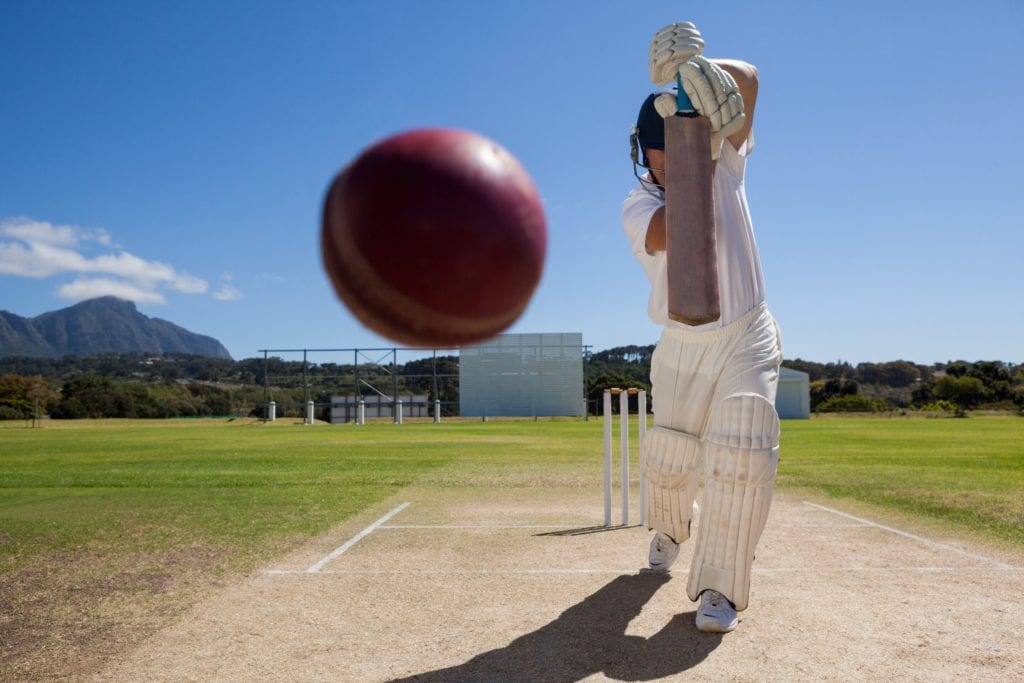

The official sport of the Jamaicans is Cricket and is played as in other countries, with two opposing teams of eleven players each. (NB. For a description of how the game is played, please see above under Australia).
#12. Korea Republic (Taekwondo)
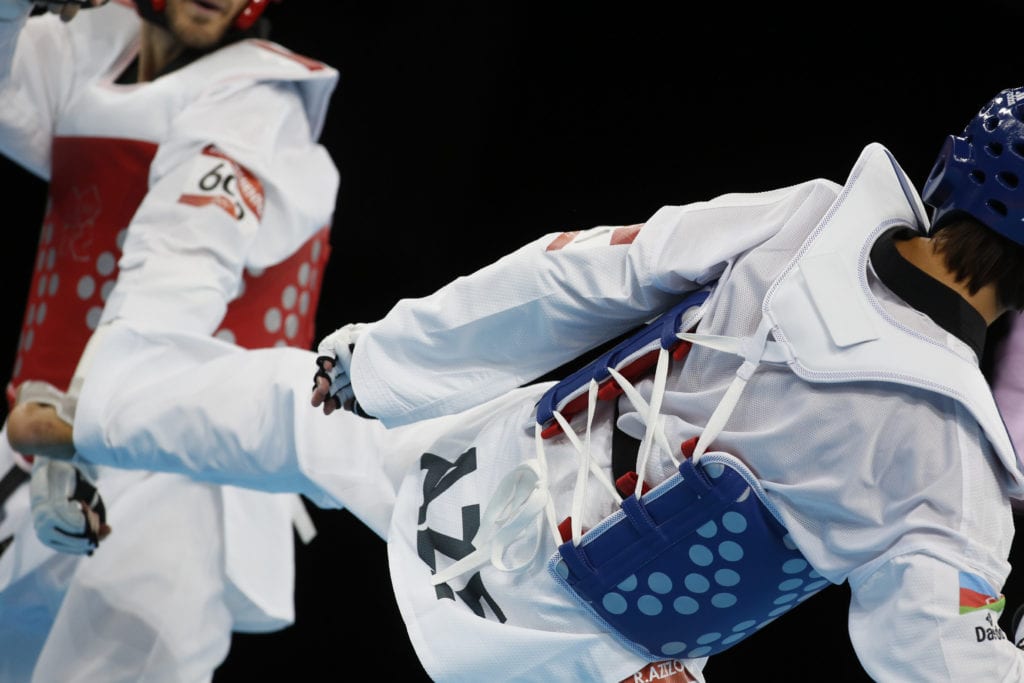

This sport is a form of Korean Martial Arts and included a certain degree of Chinese and Korean Martial Arts. Taekwondo is the national pastime of the two Koreas—South and North. It is a particularly aggressive form of karate, that utilizes punches, jabs, chops, blocking and choking moves, and particularly powerful, leaping kicks.
#13. Lithuania (Basketball)


In Lithuania, basketball is considered the national sport and is a highly competitive game with many participants playing for fame and glory. The game of basketball comprises of two teams made up of five players each on the two opposing sides playing at one time on the rectangular wood floor court with a raised basket or goal at each end. There are also substitute players that the team coach exchanges from time to time during the four 12 minutes quarters. Points are scored in the game by tossing the round, inflated ball, approximately 30 inches (76 cm) in circumference, through the opponent’s basket. The winner of the game is the team that scores the most cumulative score at the end of the four quarters. Despite being the national pastime of Lithuania, it is also quite popular in the United States of America.
#14. Mexico (Charreria)
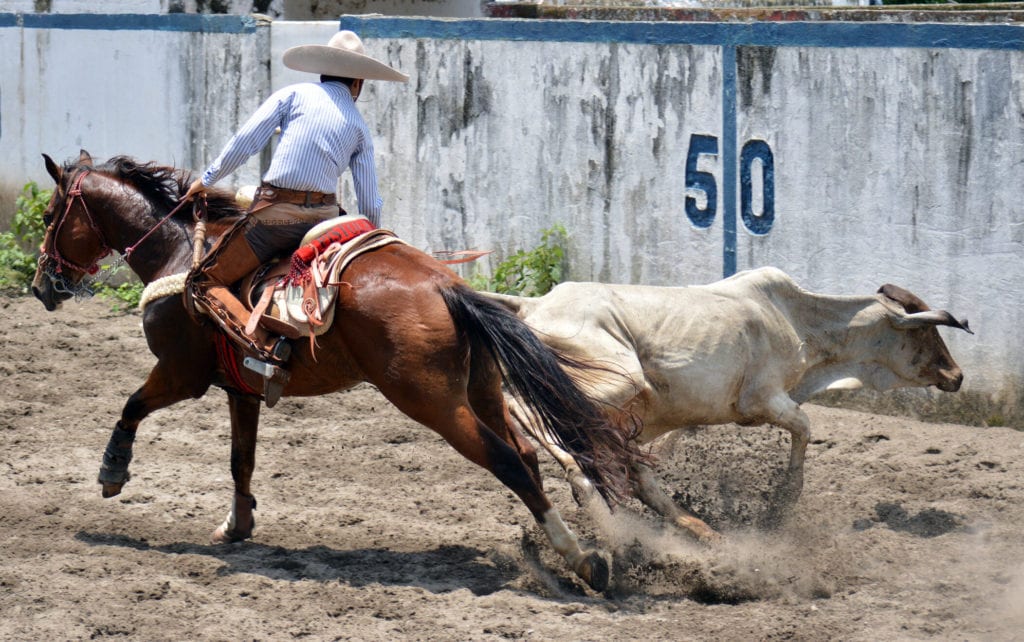

Charreria looks very much like the rodeo; however, the point of difference is that unlike rodeos, the winners are not awarded any financial rewards. The pastime, like the rodeo, it involves calf roping and the display of skills by the horsemen or Charros. Both male and female can participate as they “compete against each other in daring encounters of horsemanship.” It is considered the official sport of Mexico and plays an integral part in the Country’s culture and heritage.
#15. New Zealand (Rugby Union)


Rugby Union is the national pastime of the country of New Zealand. For more than a century, it has been participated in by a large percentage of the Country’s population. The game is also called rugger, or Rugby football. This form of football is played between two teams of 15 members each. However, this game differs from soccer in the freedom of play in which players can carry the ball, block with the hands and arms, and tackle. The game of rugby is characterized chiefly by continuous action and prohibition against the use of substitute players. Rugby is a very aggressive game.
#16. Norway (Cross Country Skiing)


Cross Country Skiing is the national pastime of the country of Norway. In this sport, the skiers are required to depend on their locomotion gears to move across expansive terrains of snow covered mountains.
#17. Peru (Paleta Fronton)
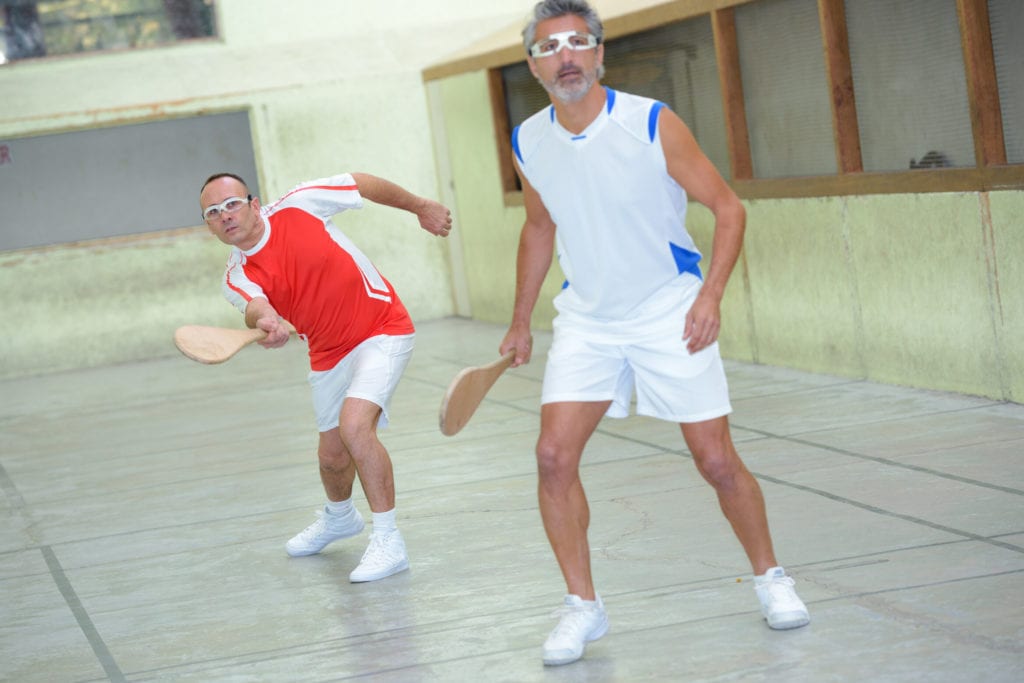

In Peru, this sport goes way back to the “pelota vasca,” which was introduced into the Peruvian society by Spanish conquistadors. In playing this game, a black rubber ball is used. The Federación Peruana de Paleta Frontón (FDPPF) is at the helm of affairs of regulating the sport.
#18. Sri Lanka (Volleyball)


In Sri Lanka, it is ubiquitous to see two teams of six players each compete against each other in the game of Volleyball. The objective is to keep a large ball in motion, from side to side over a high net, by striking it with the hands before it touches the ground. The team with the highest points win. This sport is considered as the national sport of Sri Lanka.
#19. United Kingdom (Rugby Union)


The United Kingdom and Wales have a Rugby Union which represents the two countries. The game is trendy in these parts and is participated in by many teams. (NB. For a description of how the game is played, please see above under New Zealand).
#20. United States (Baseball)


In the United States, more people participate in Baseball both as competitors and as spectators. Although of recent, attention seems to be shifting to American football and basketball (or American Football), baseball is still considered a national sport.
As earlier stipulated, this listicle is not at all exhaustive as we did not cover every single national pastime of all nations across the globe. In future articles, we will be looking at more countries and their national sports.












I think, that you commit an error. Let’s discuss.
Hi, I do think this is an excellent site. I stumbledupon it 😉 I may come back yet again since i have book-marked it.
Money and freedom is the greatest way to change, may you be rich and
continue to guide other people.